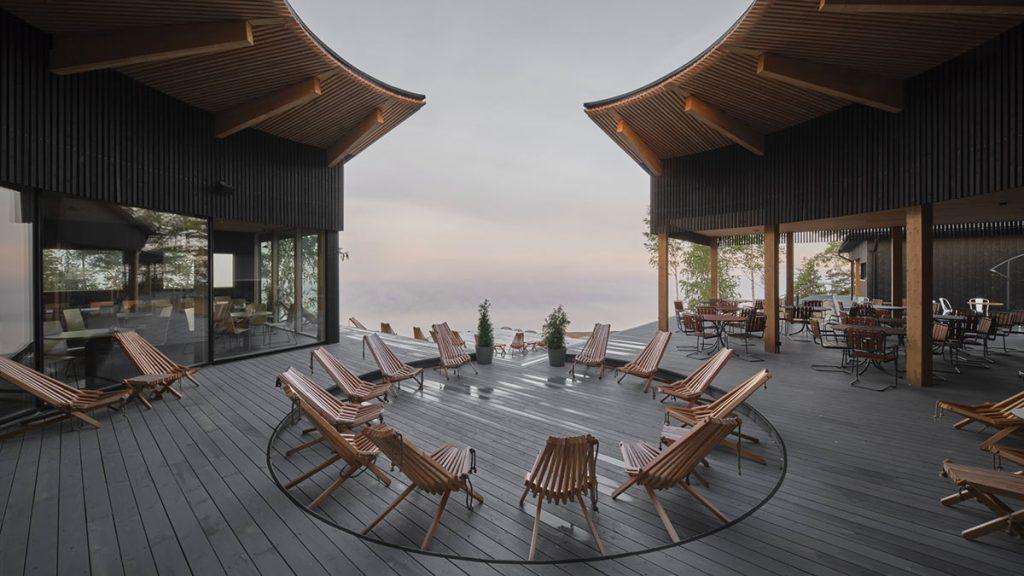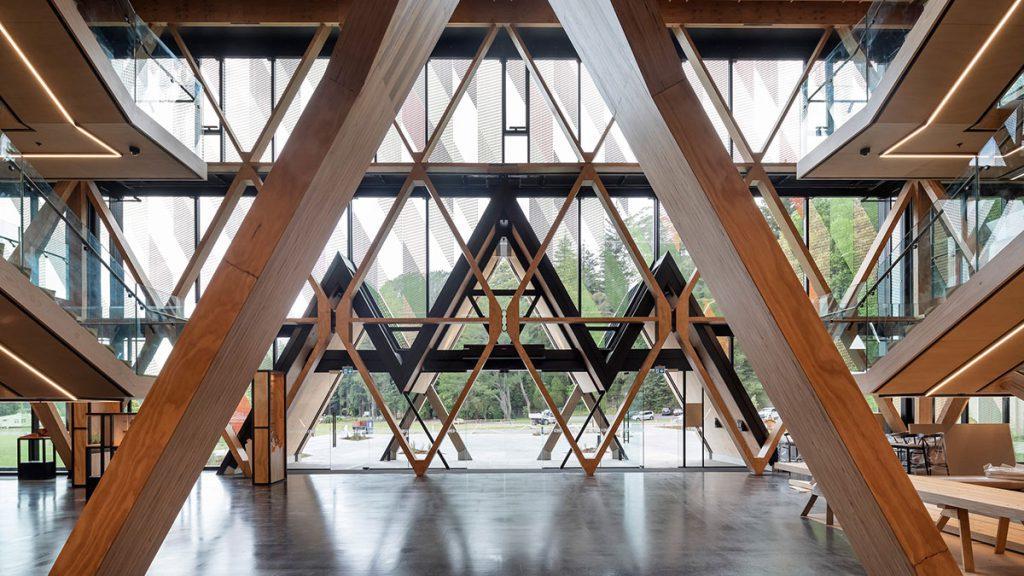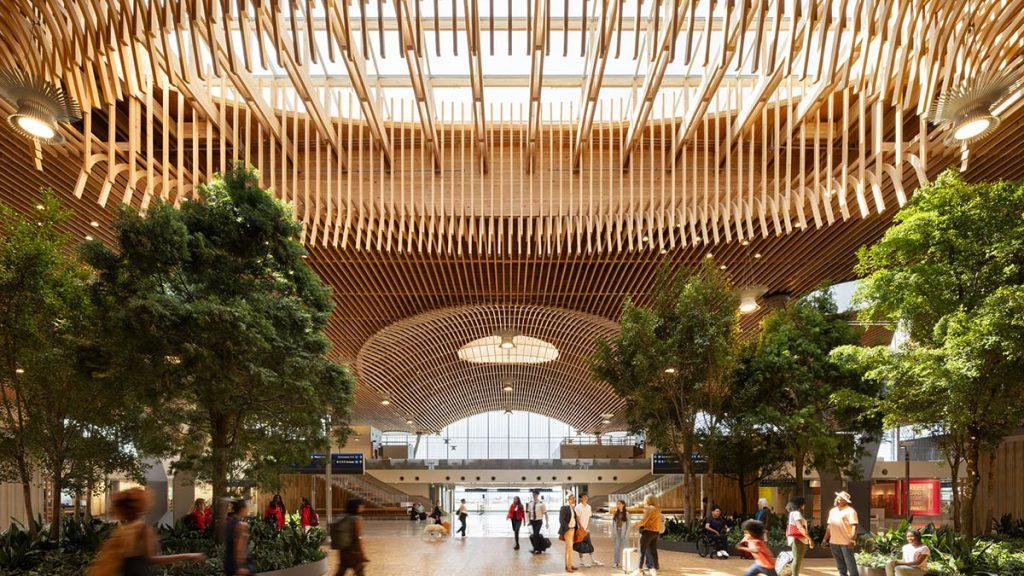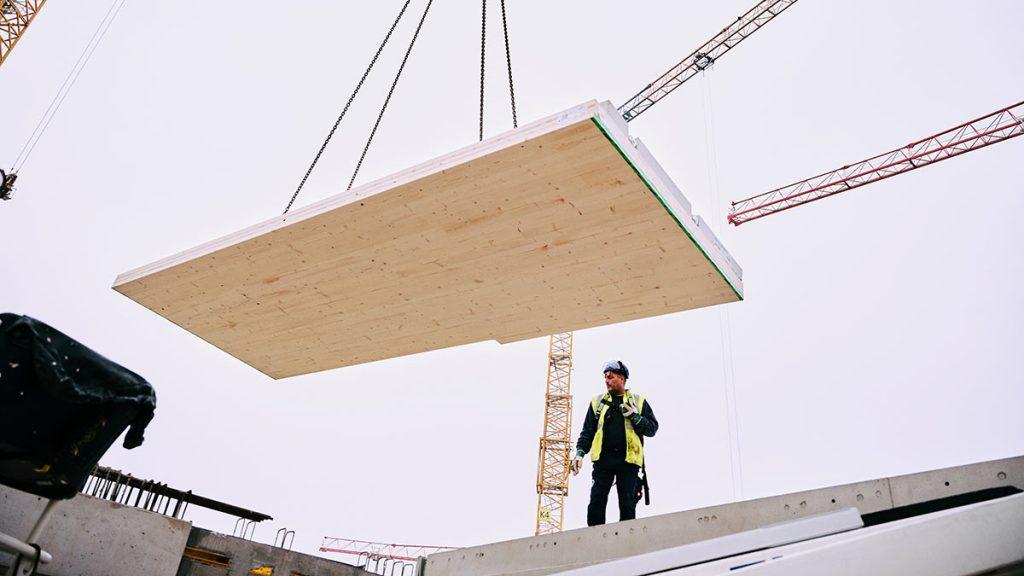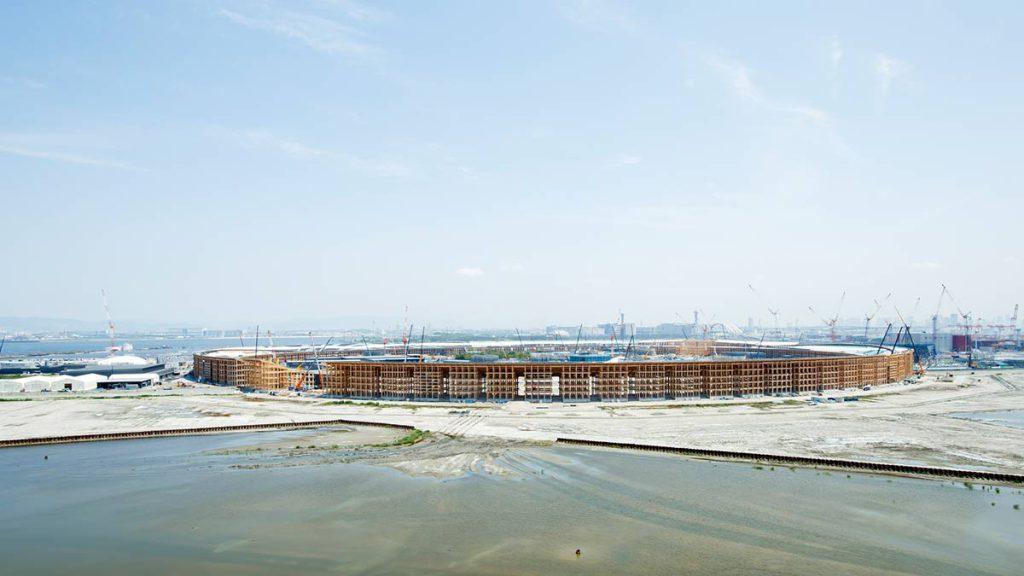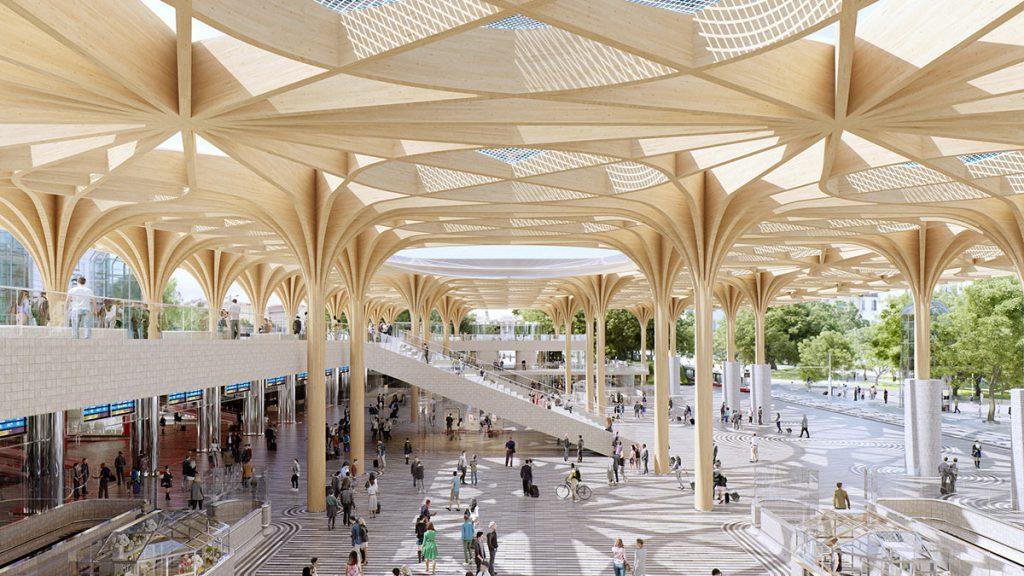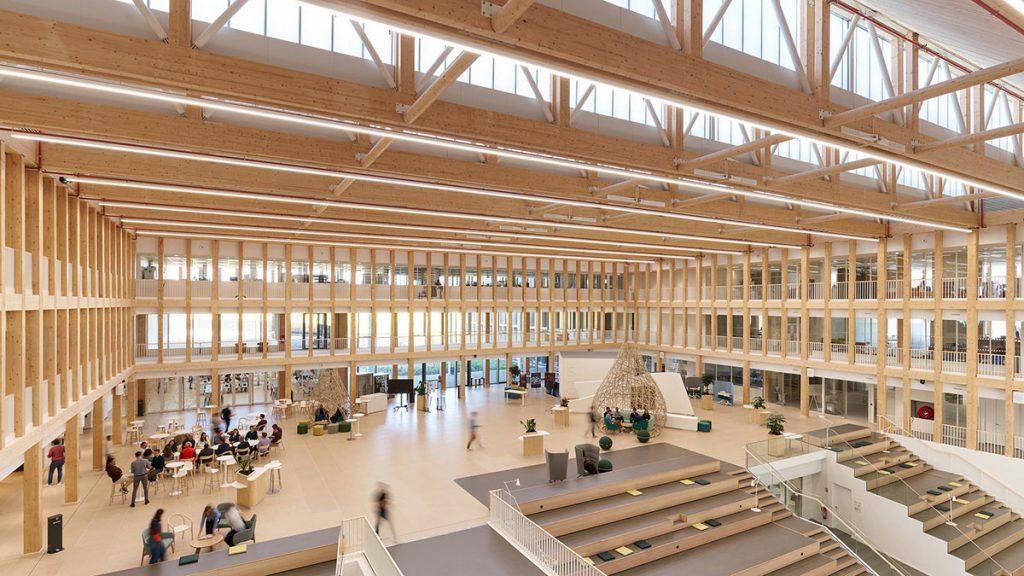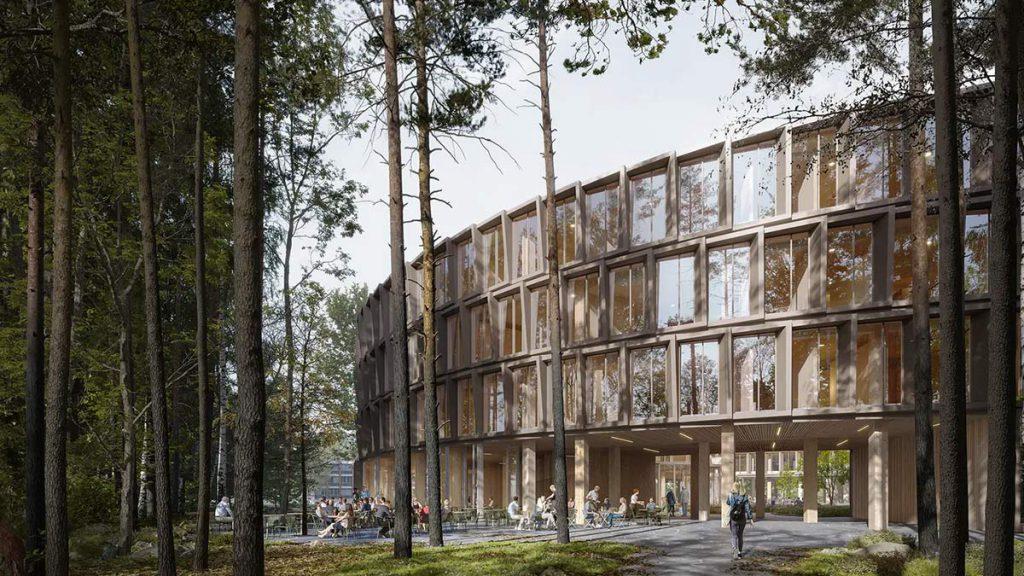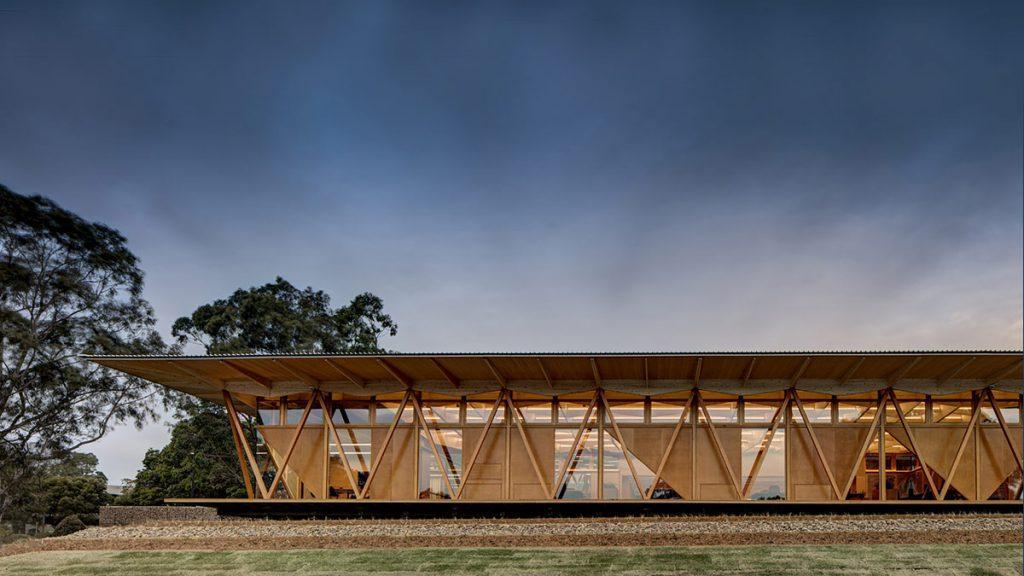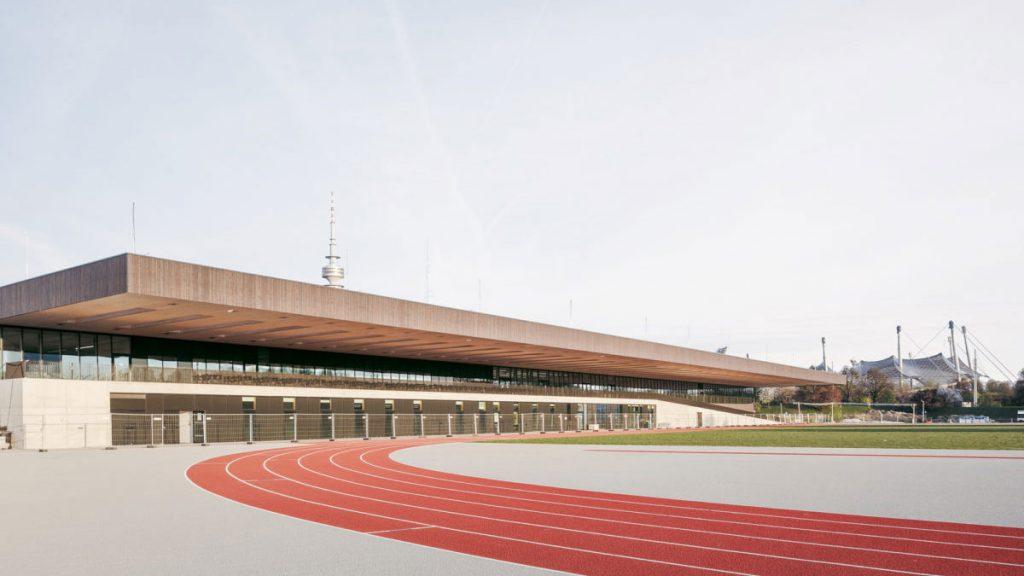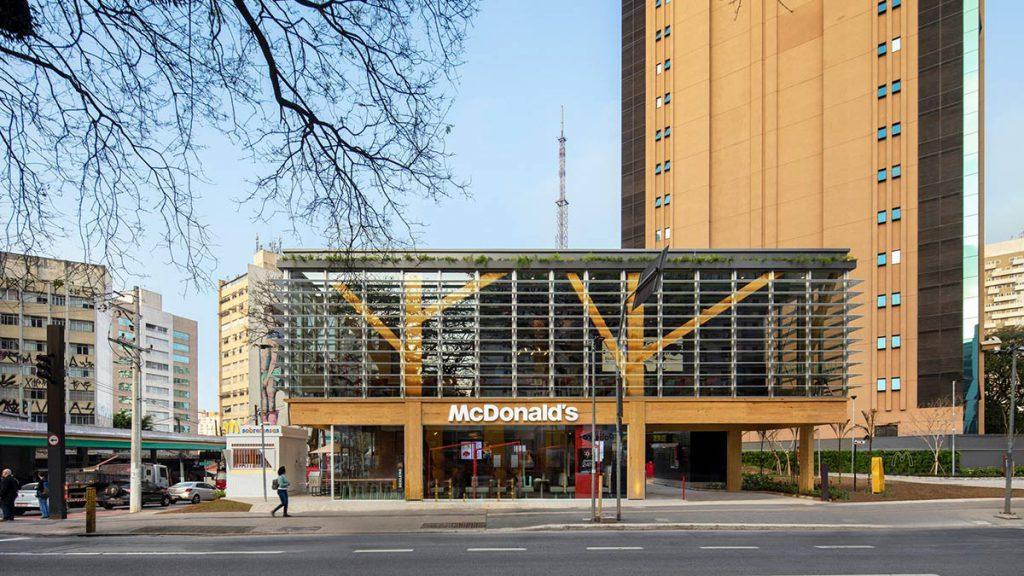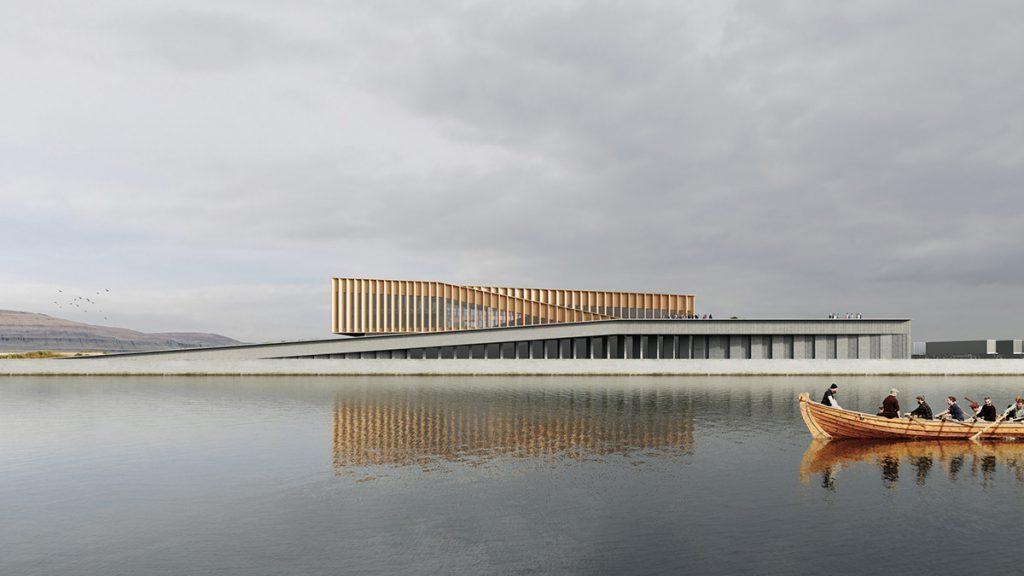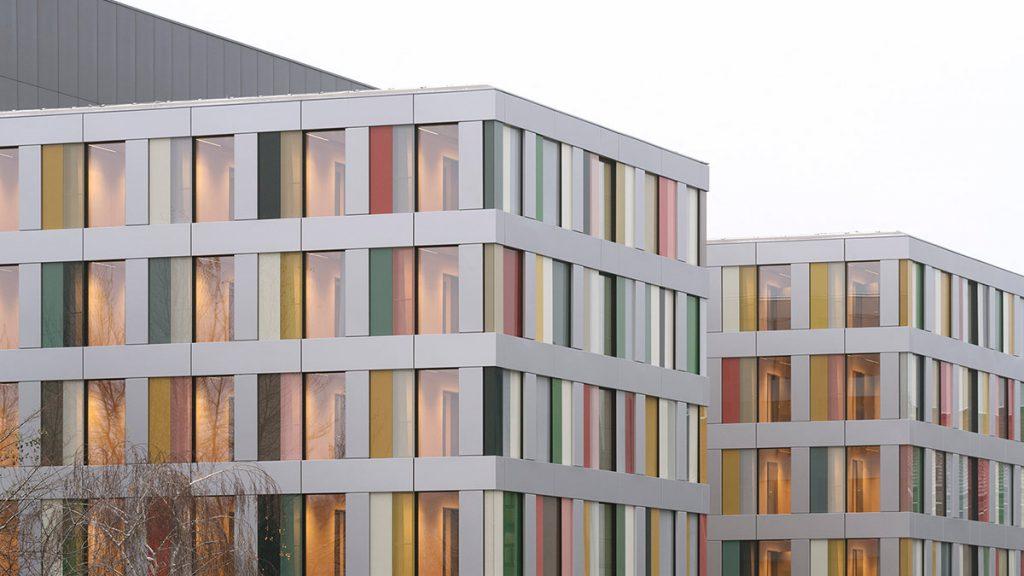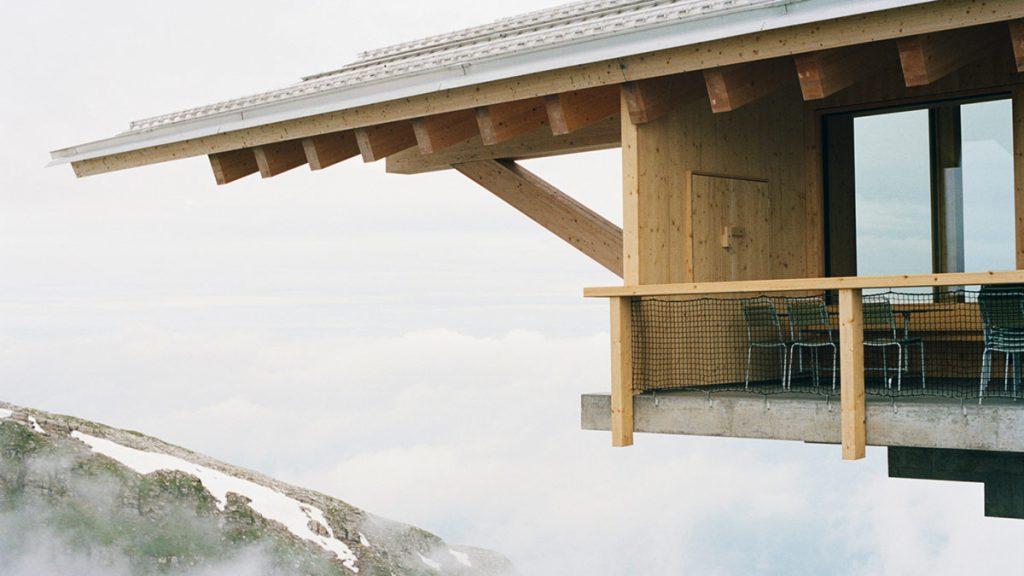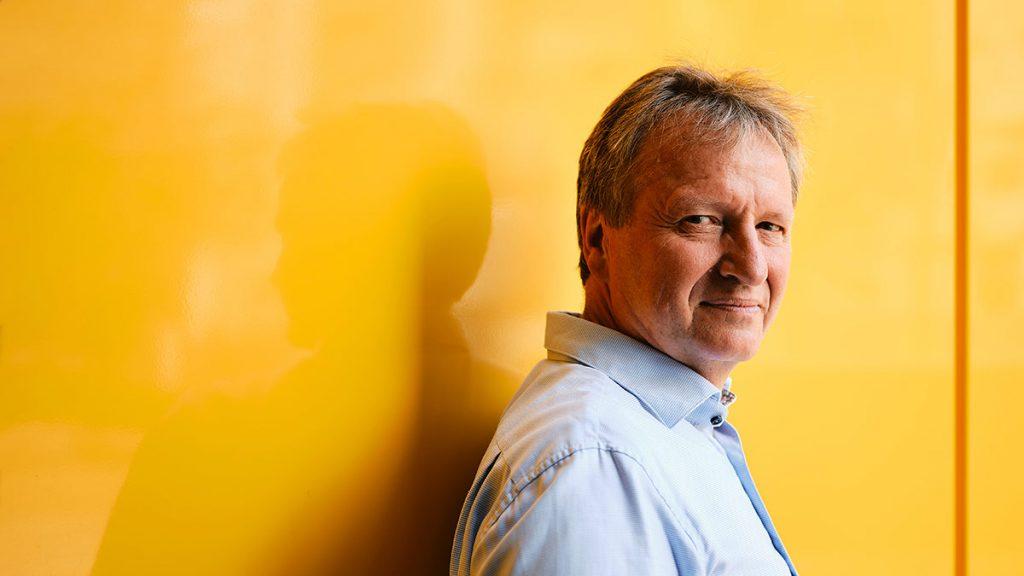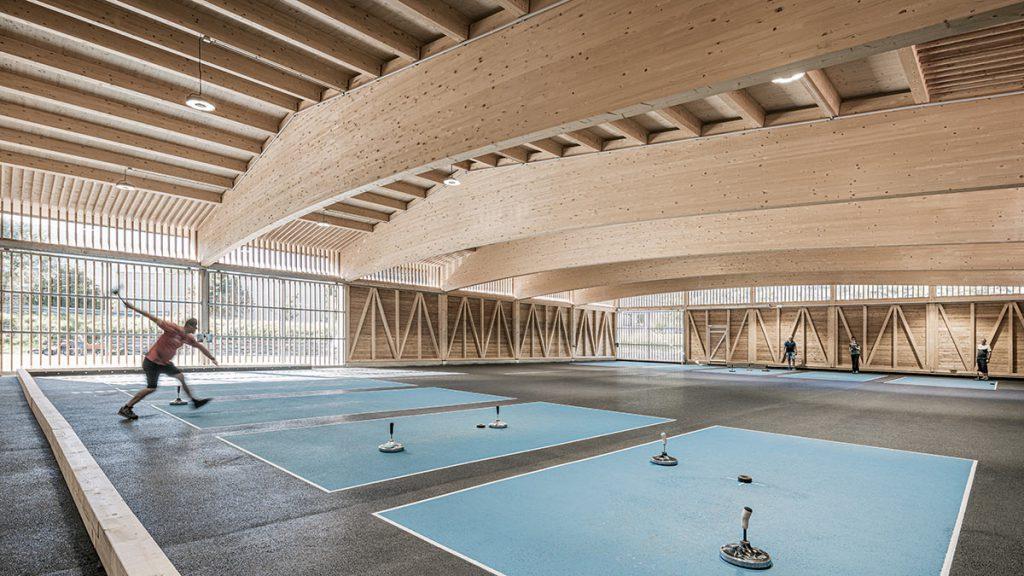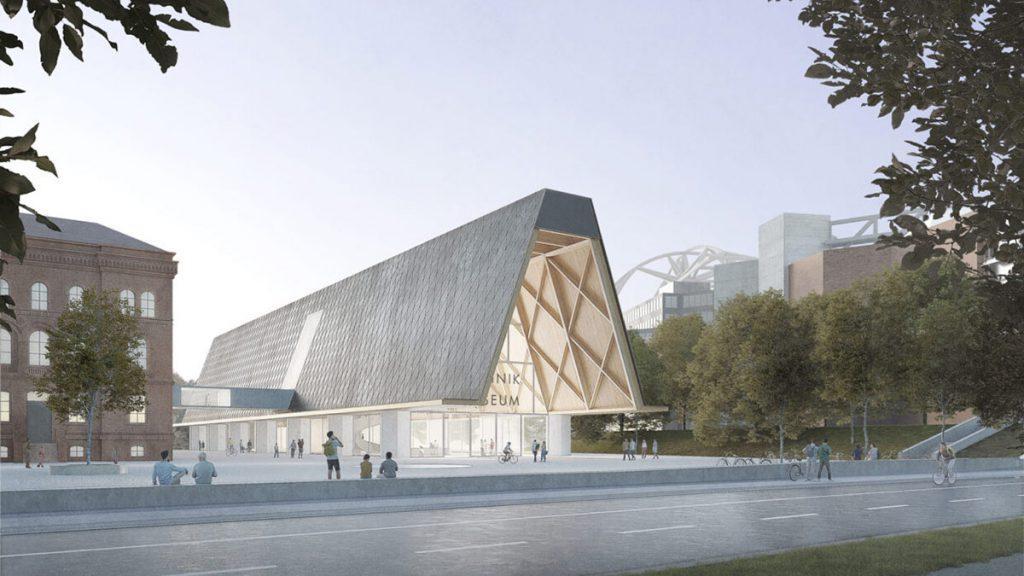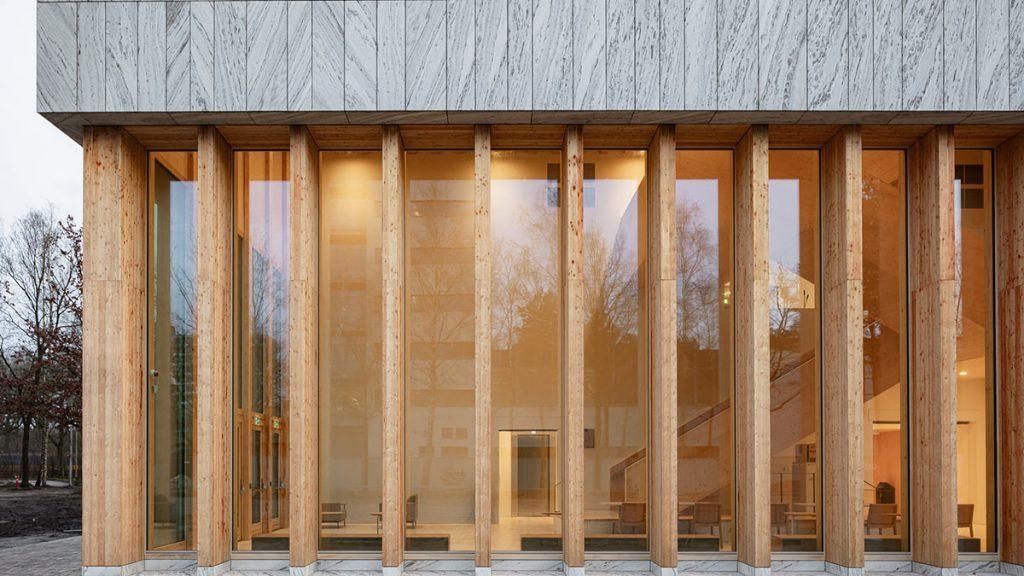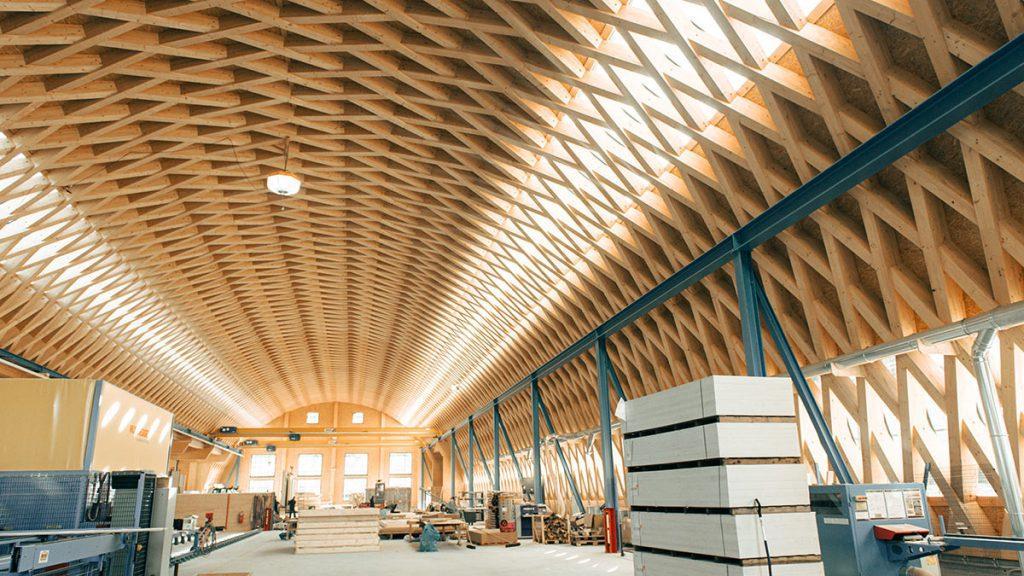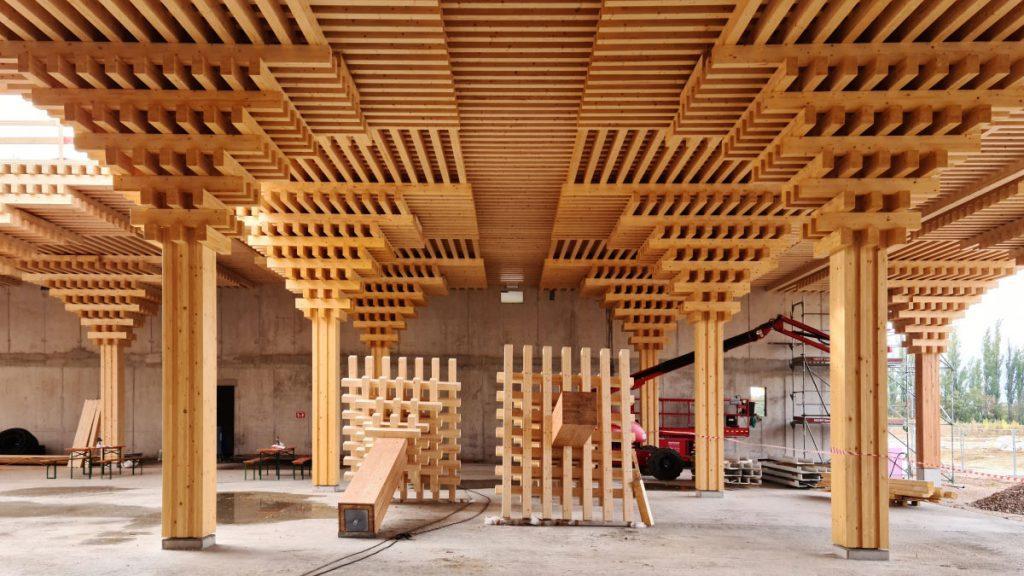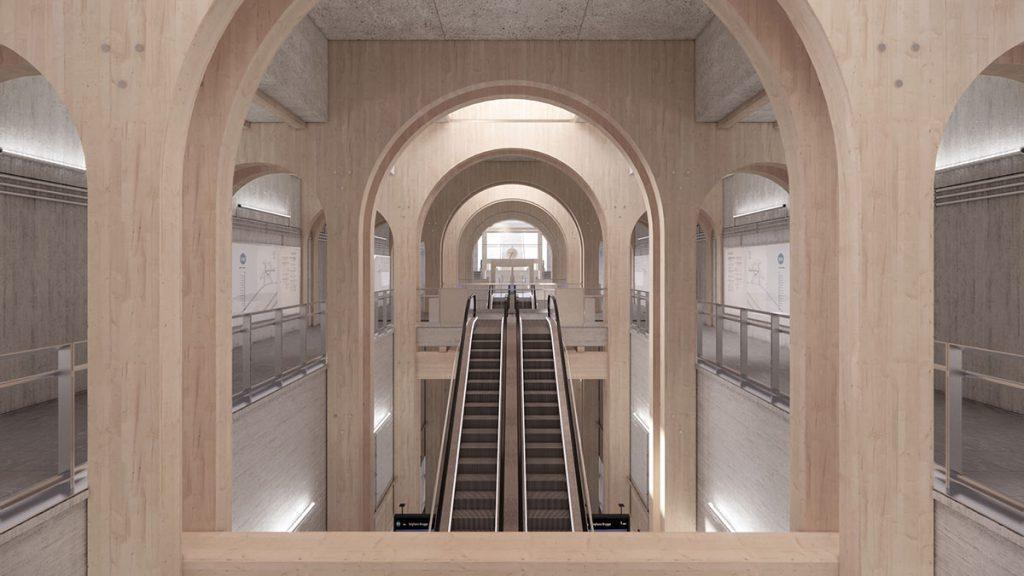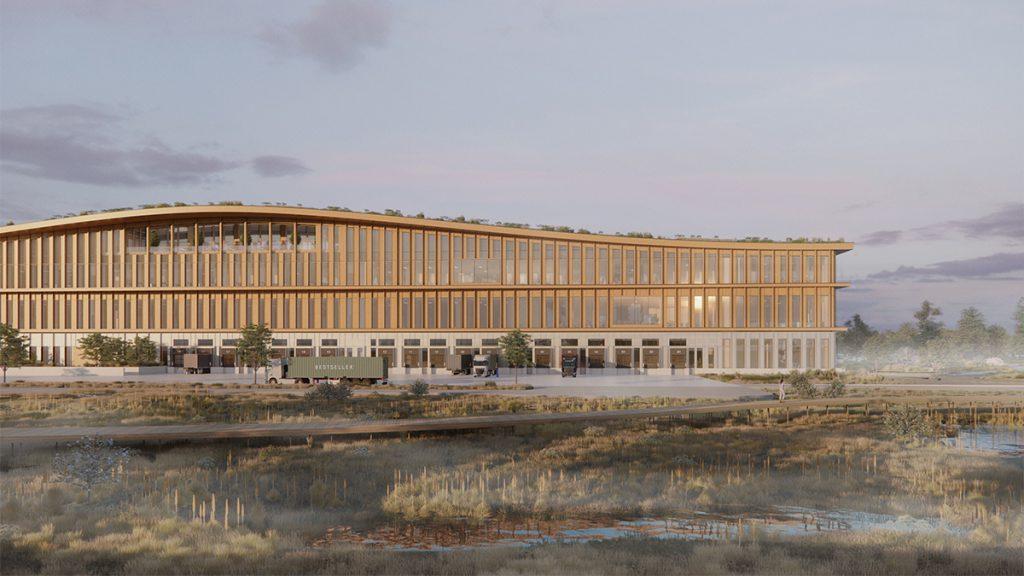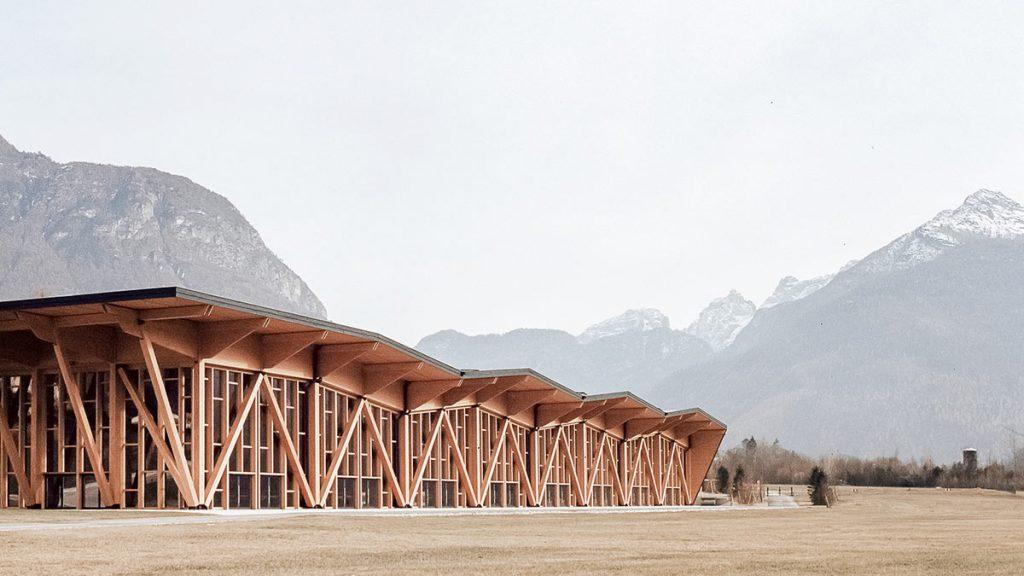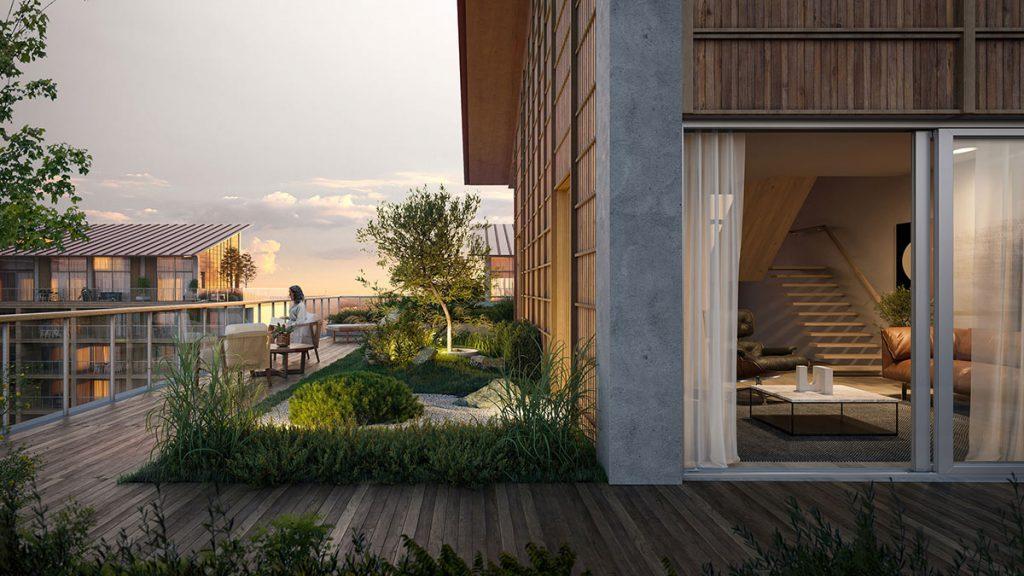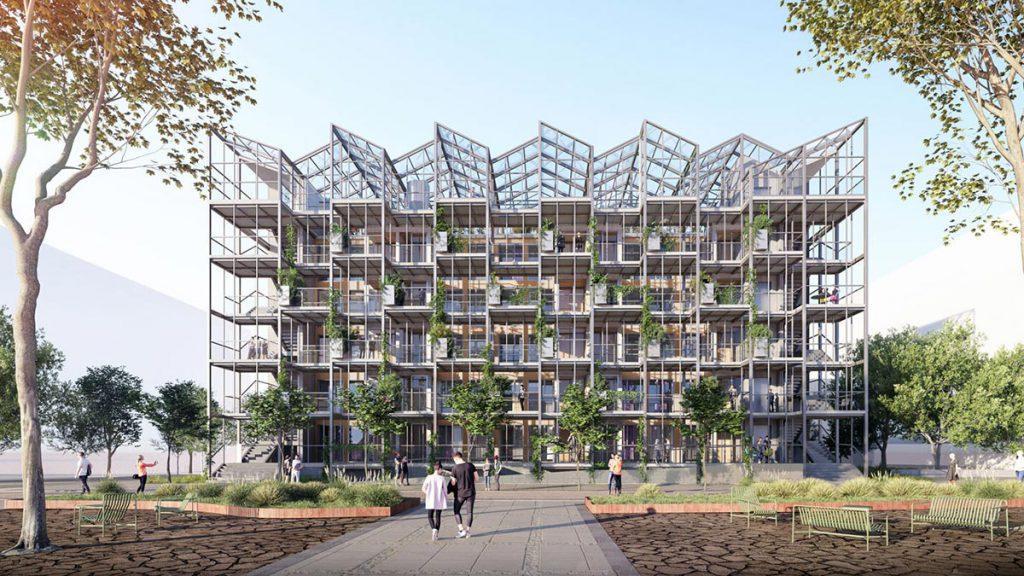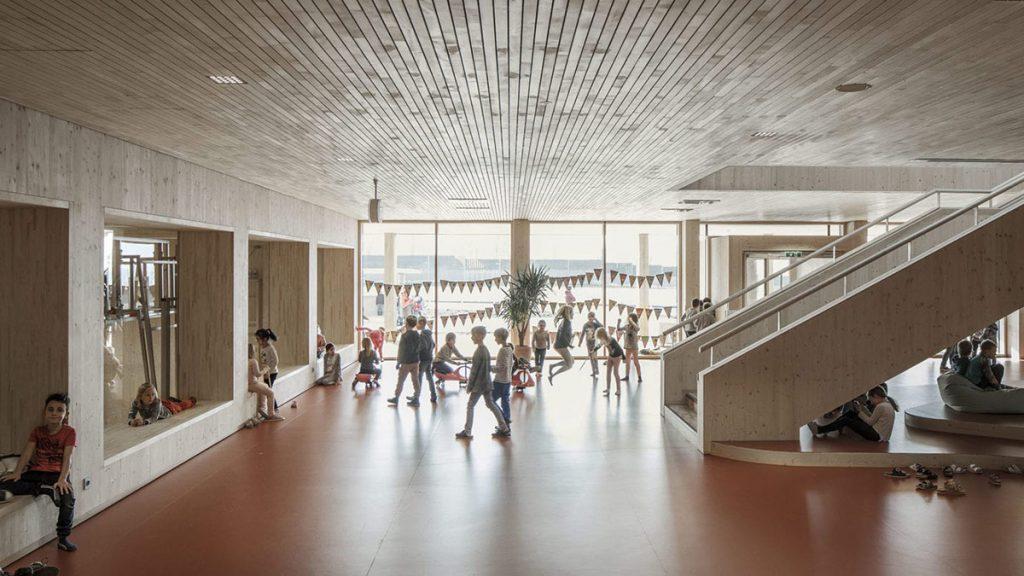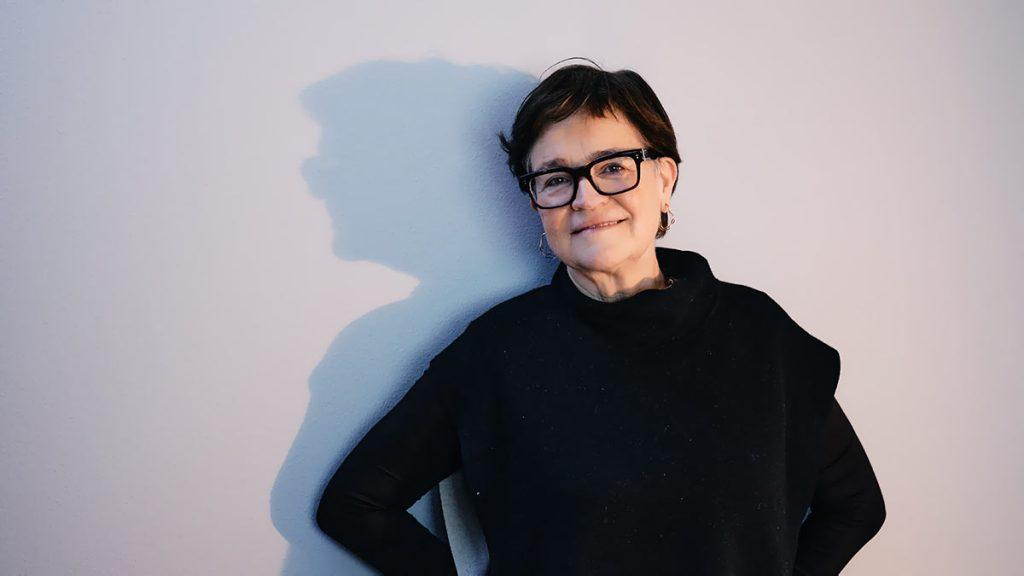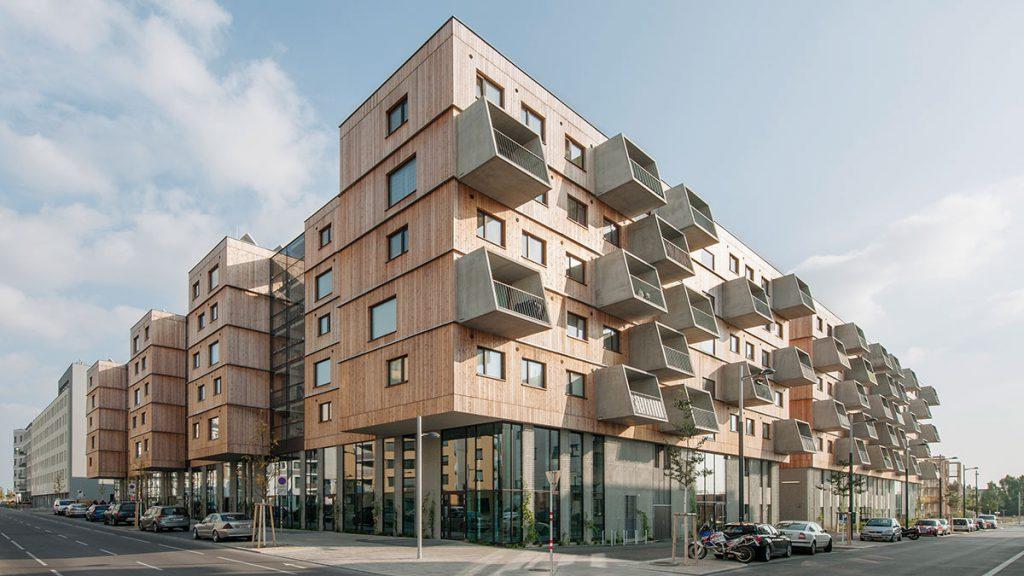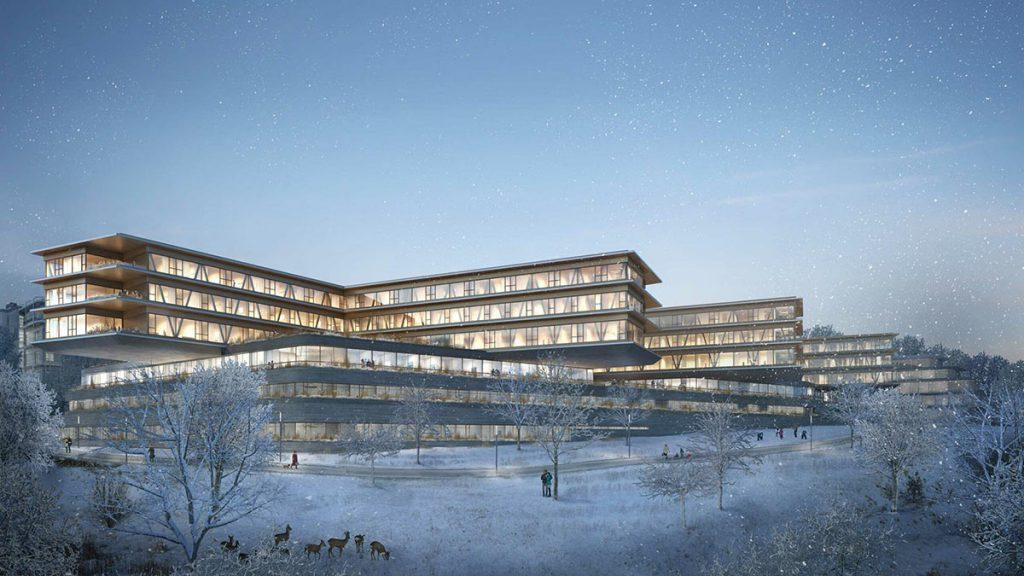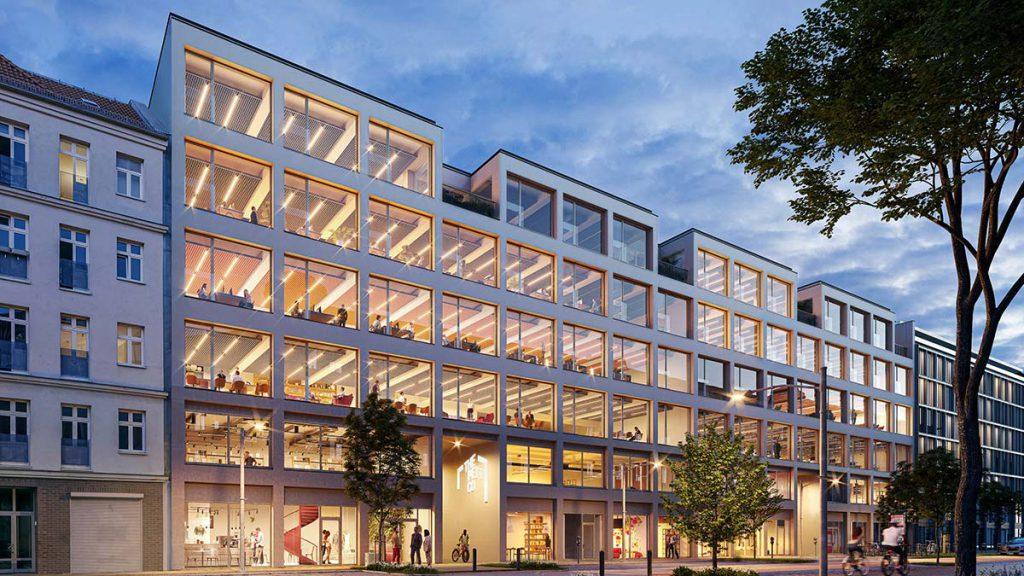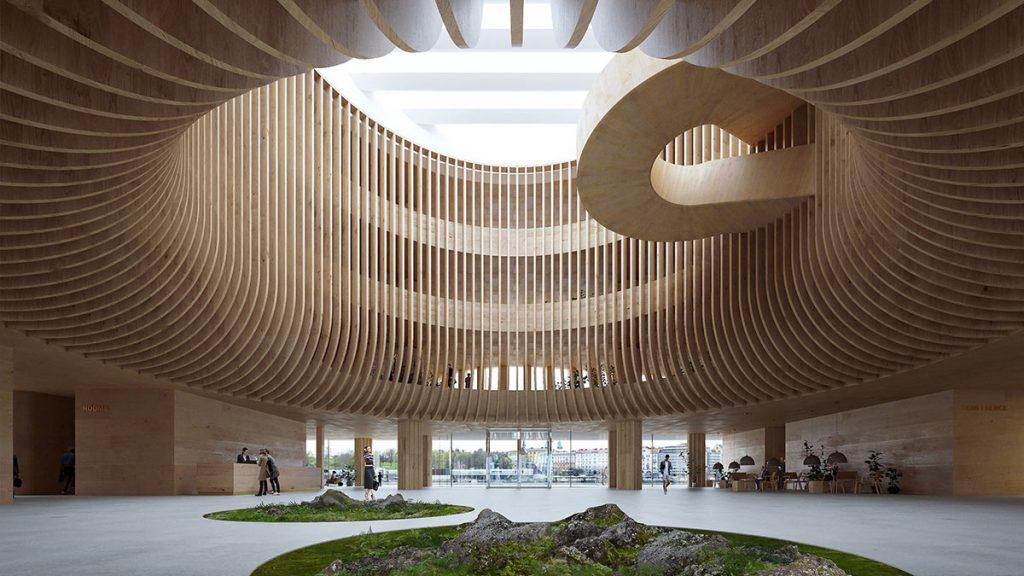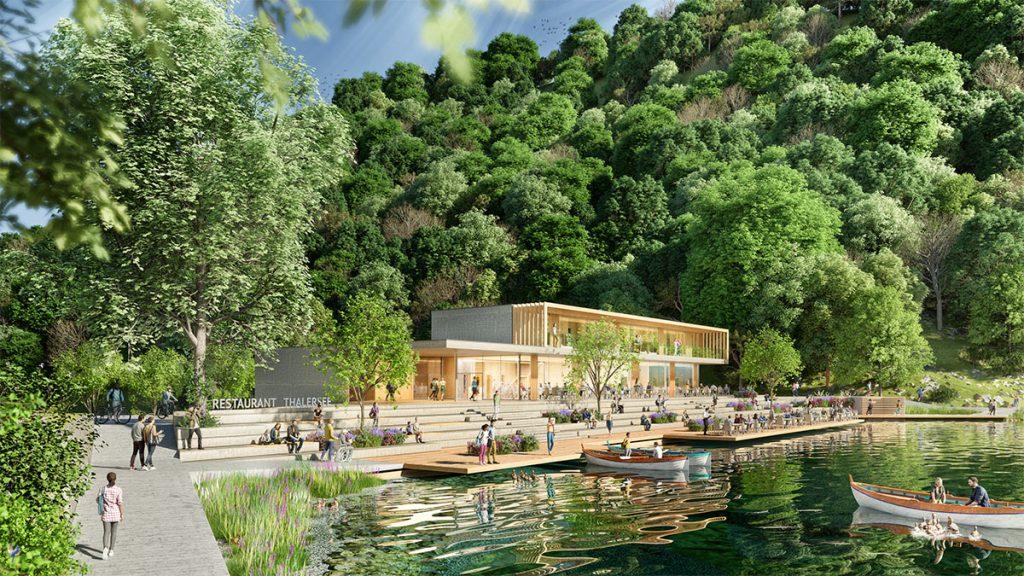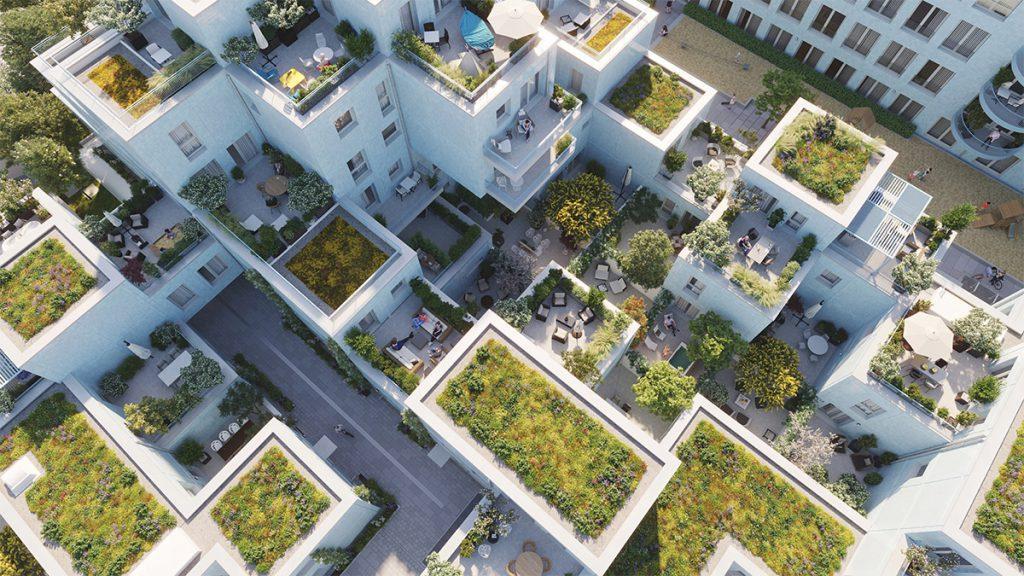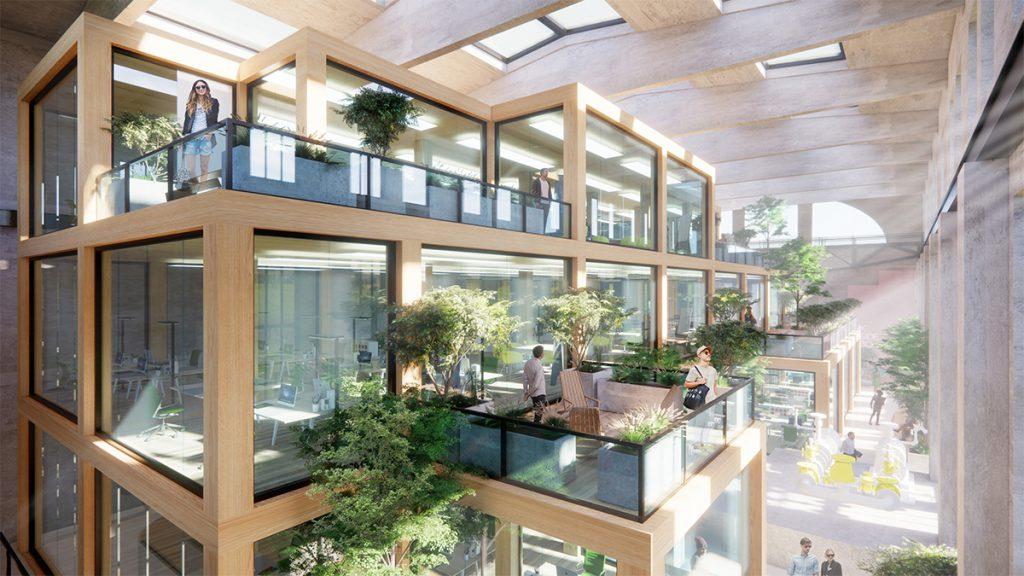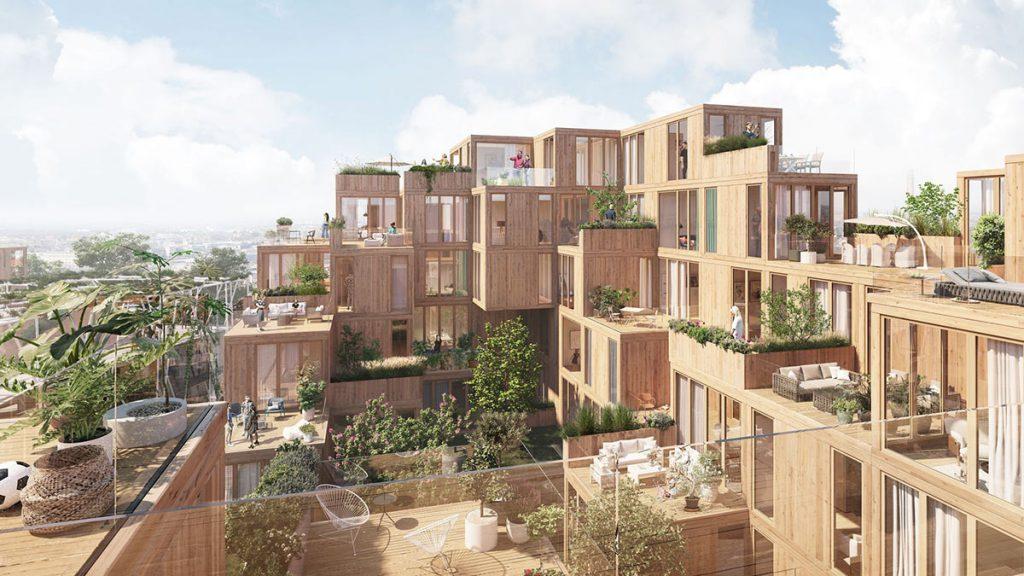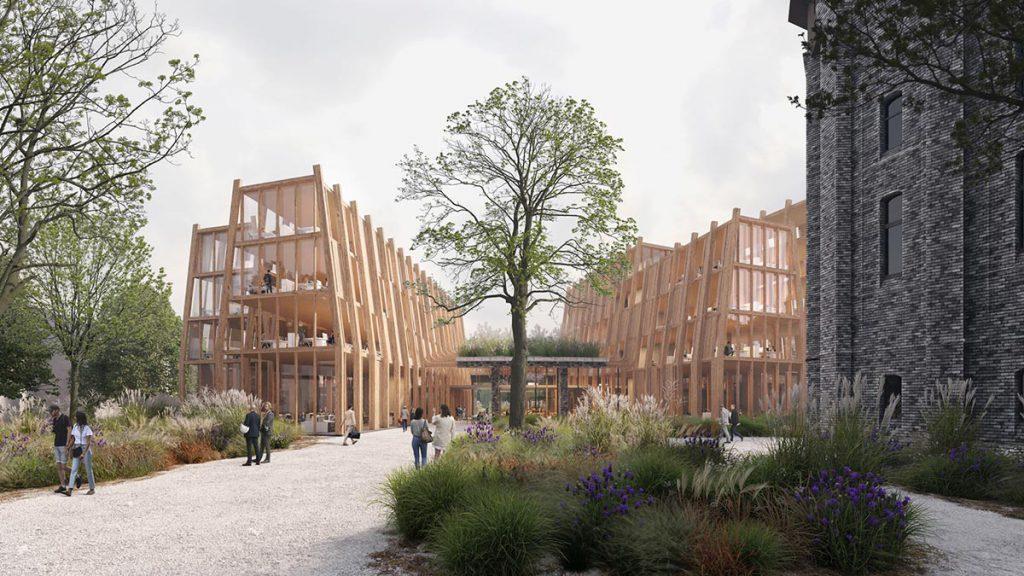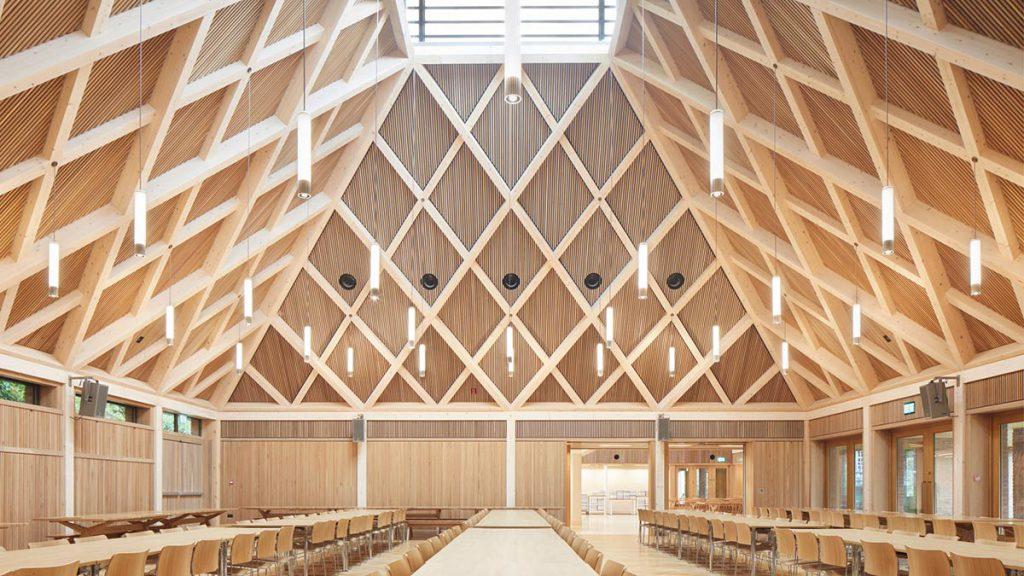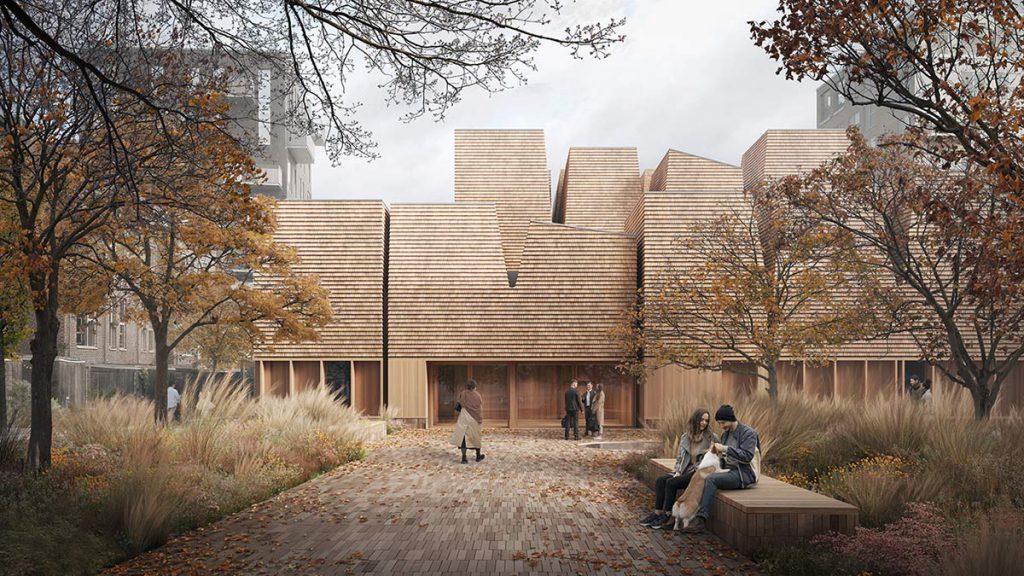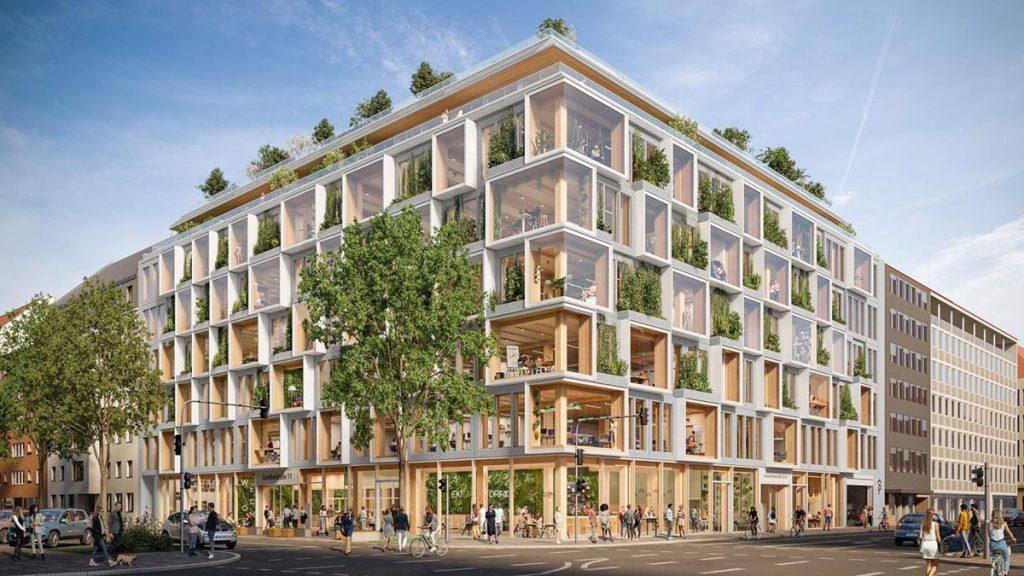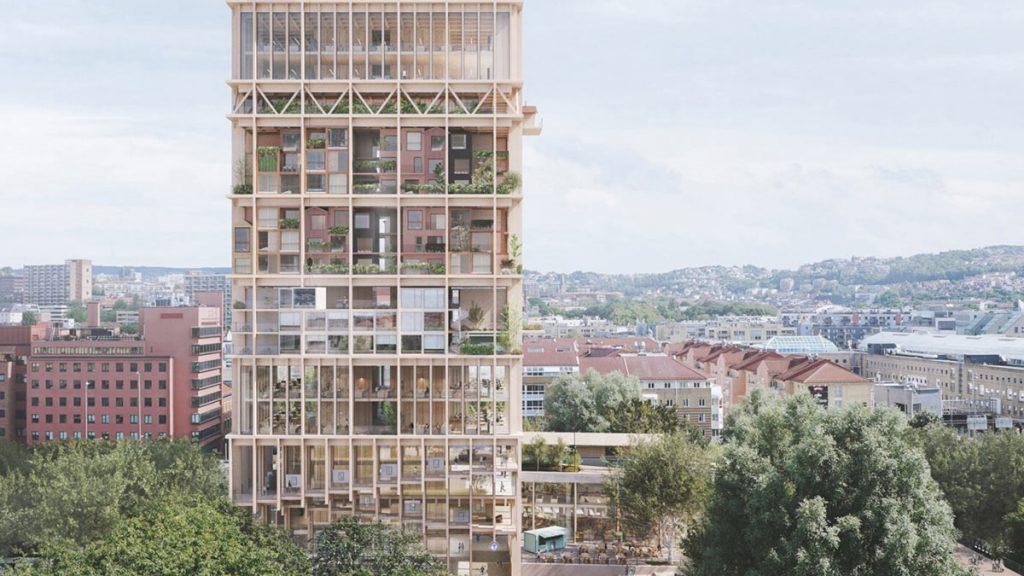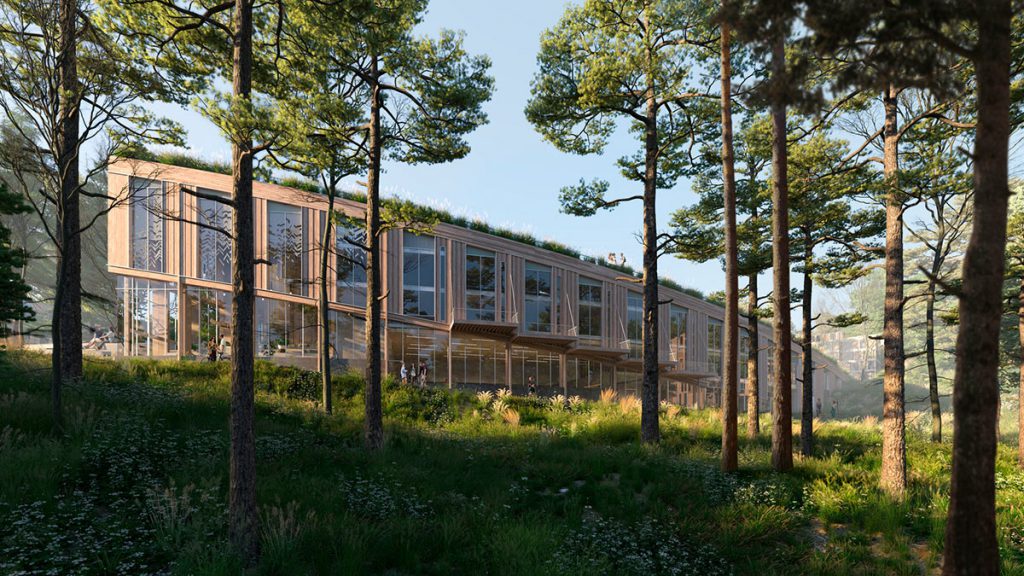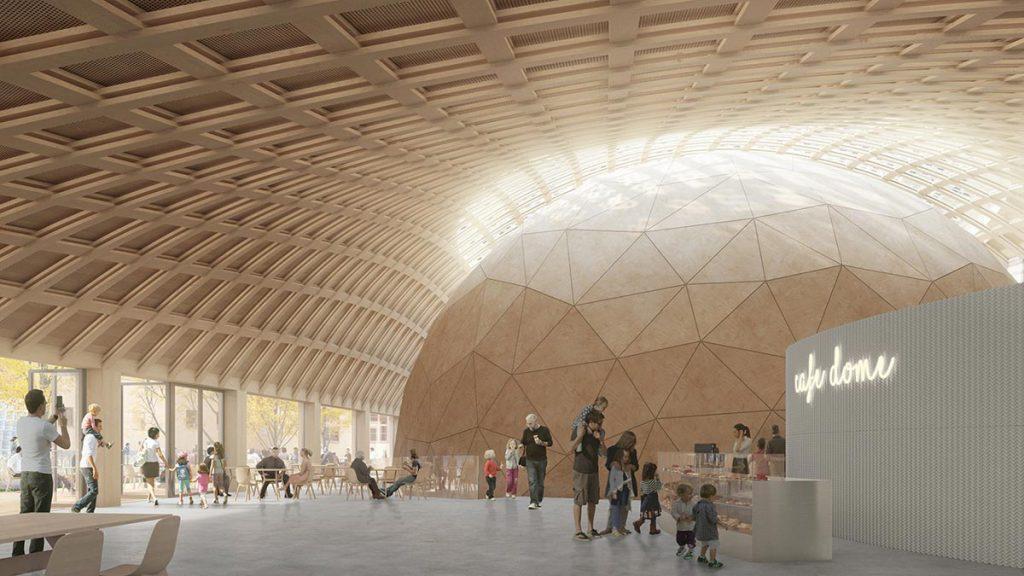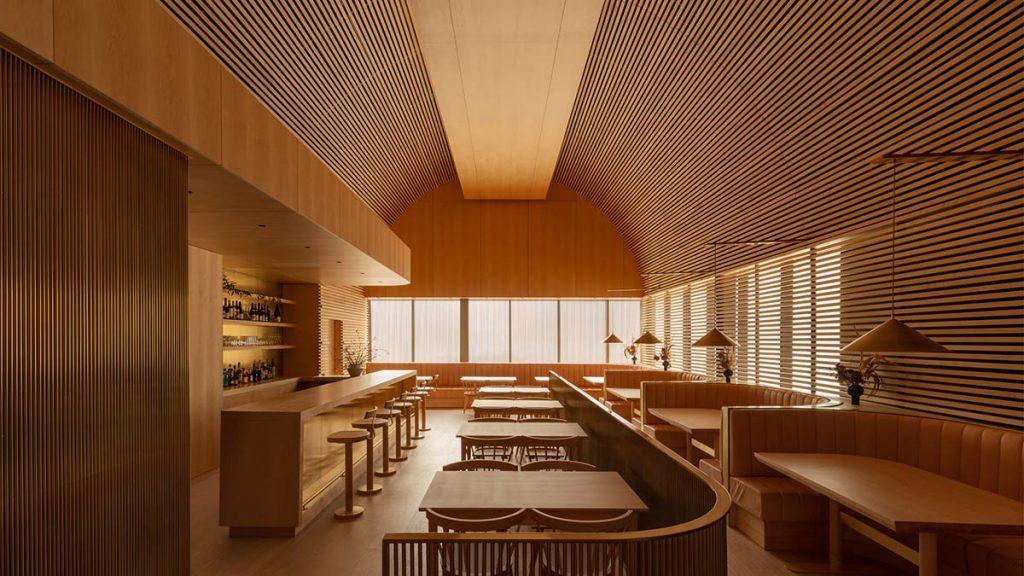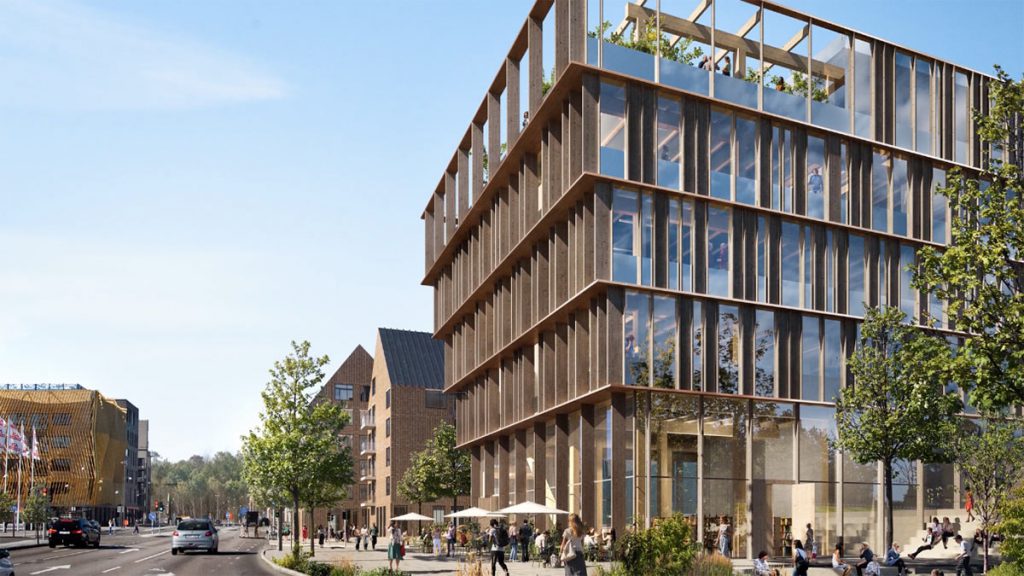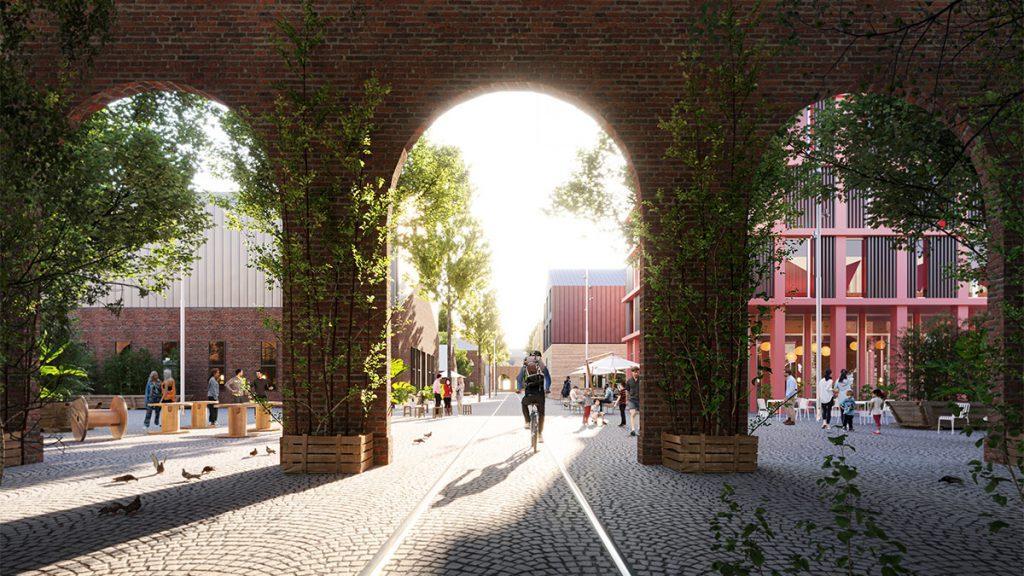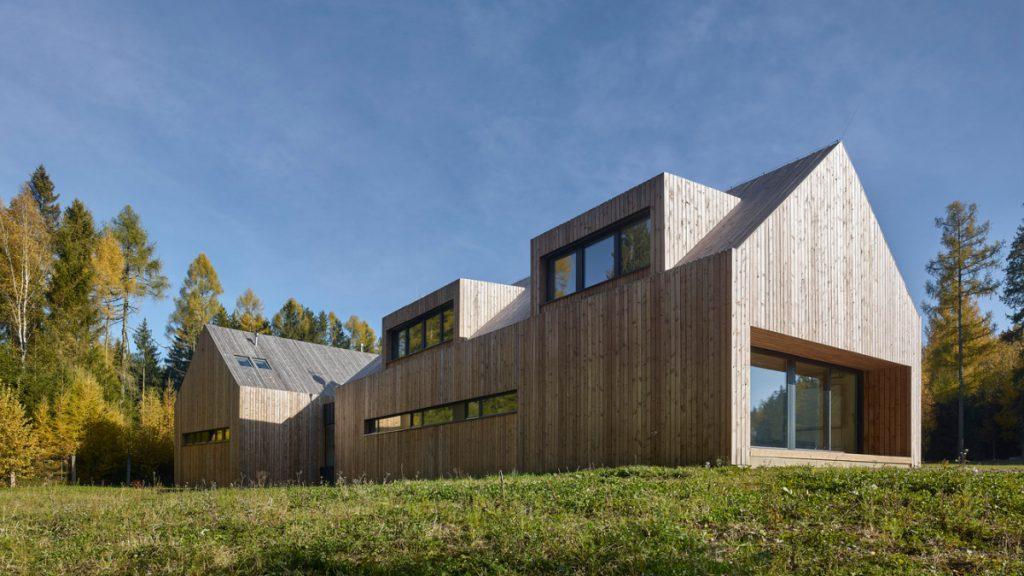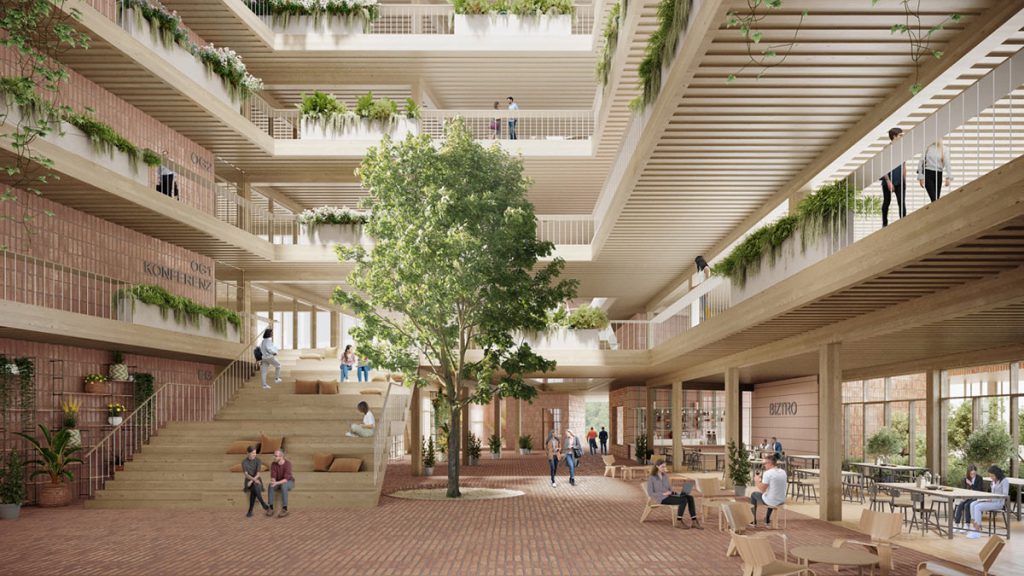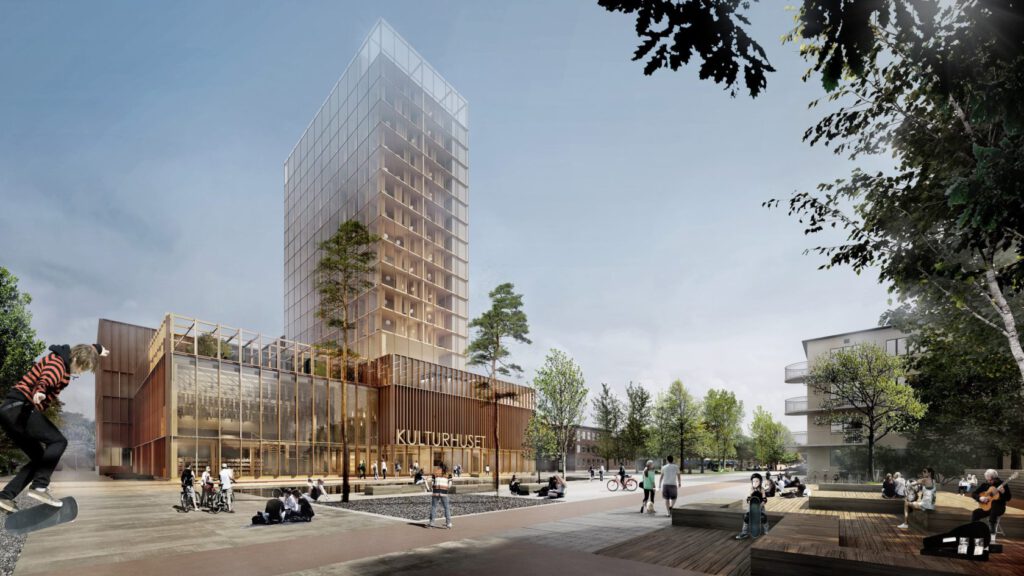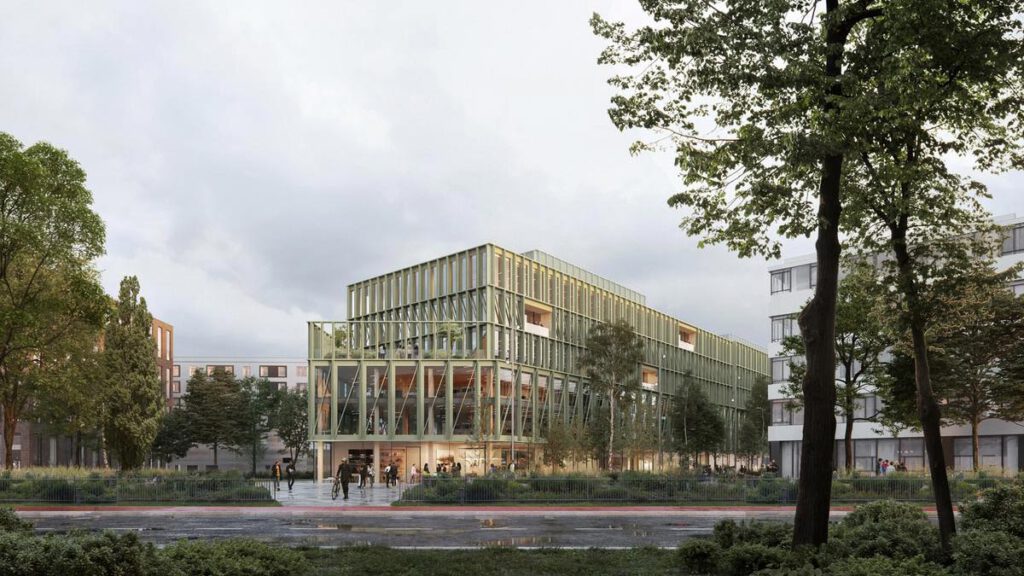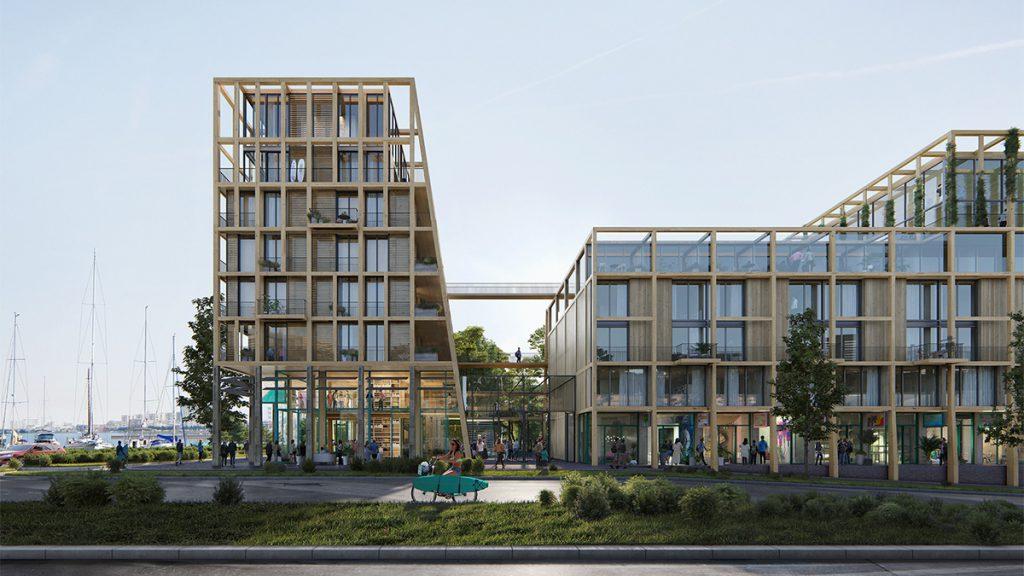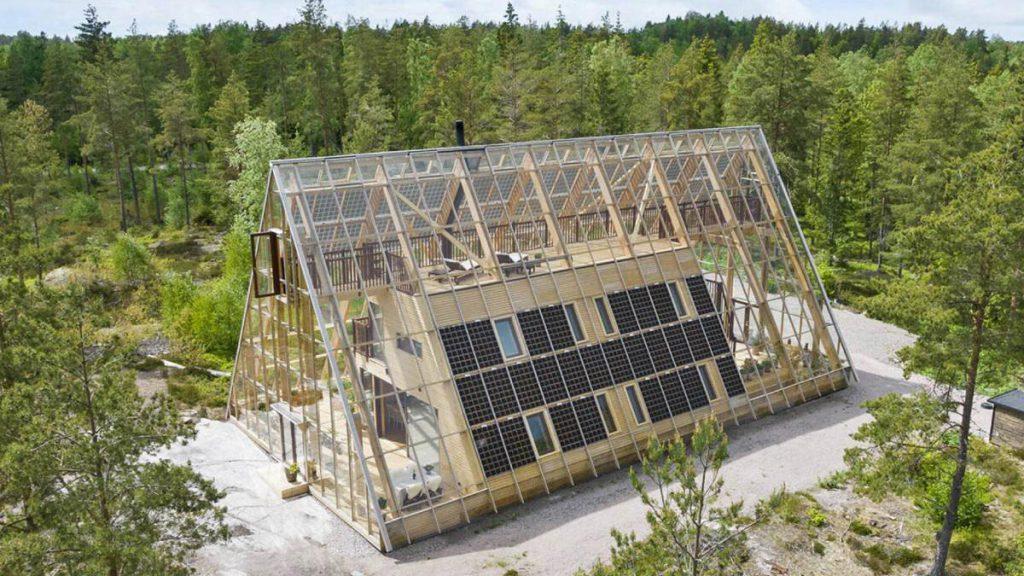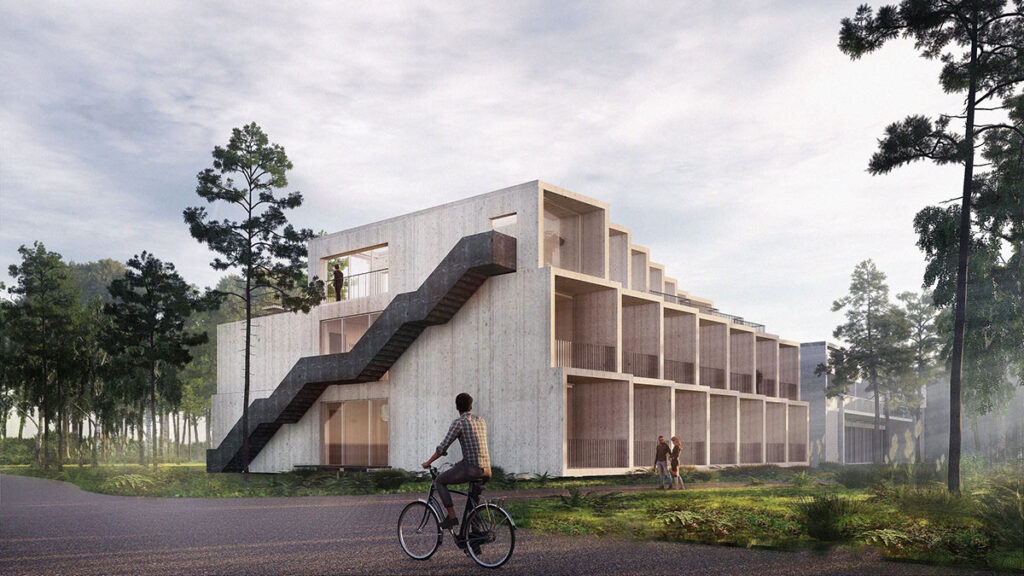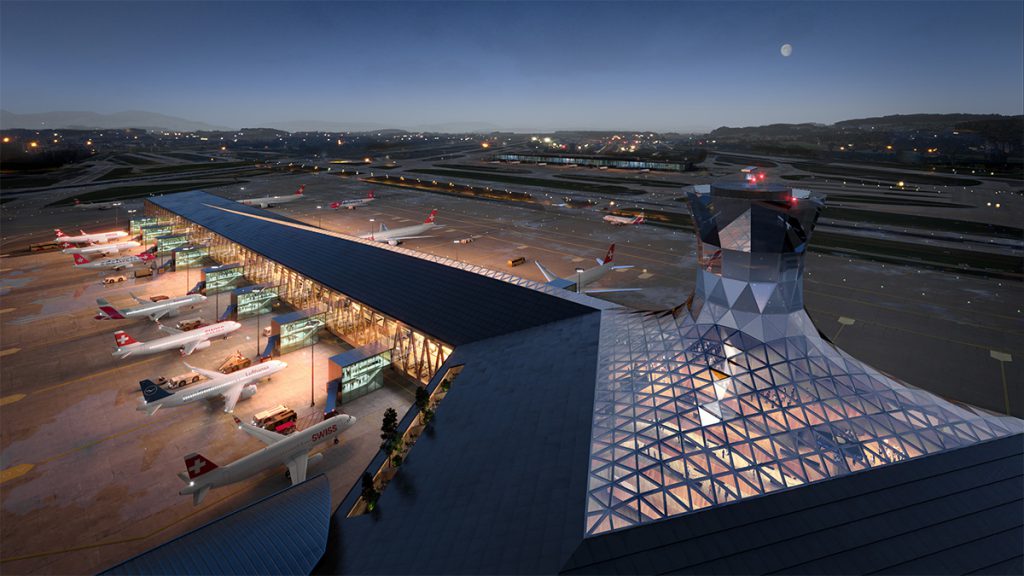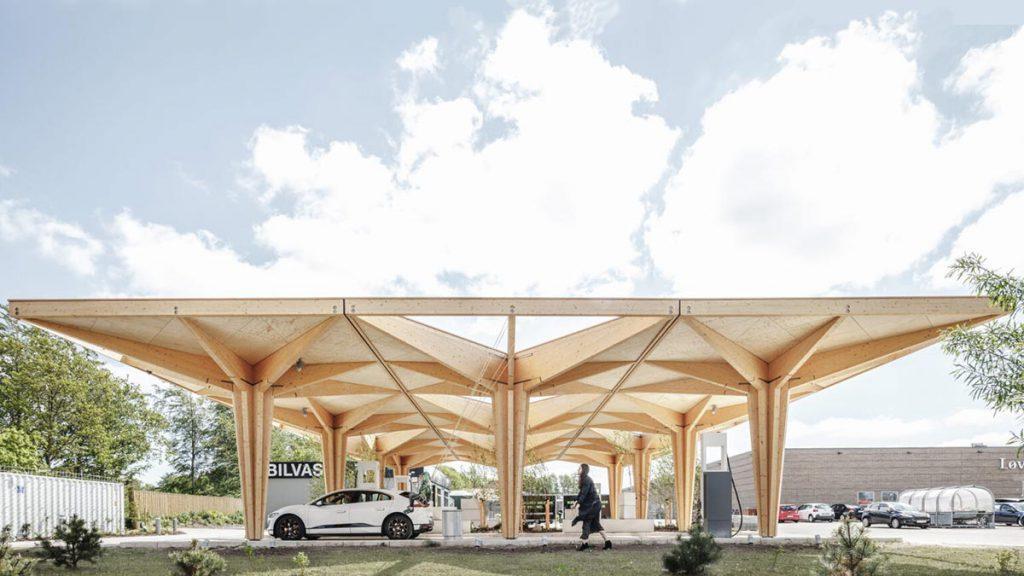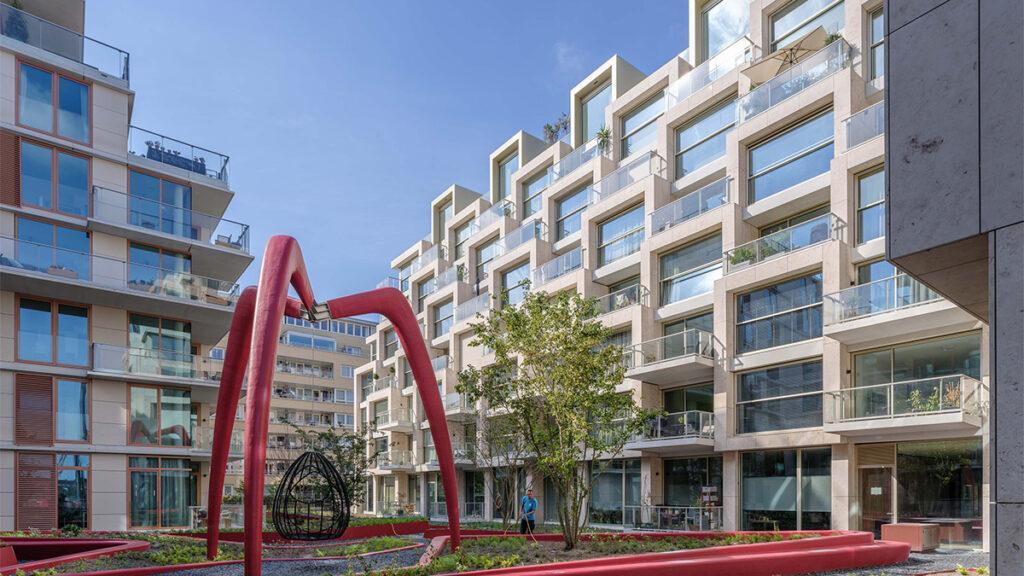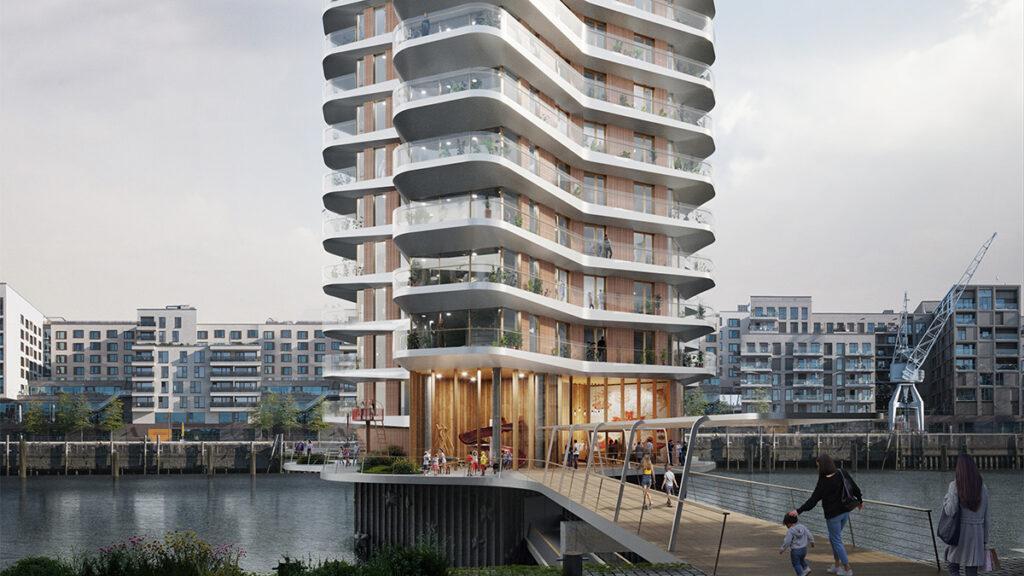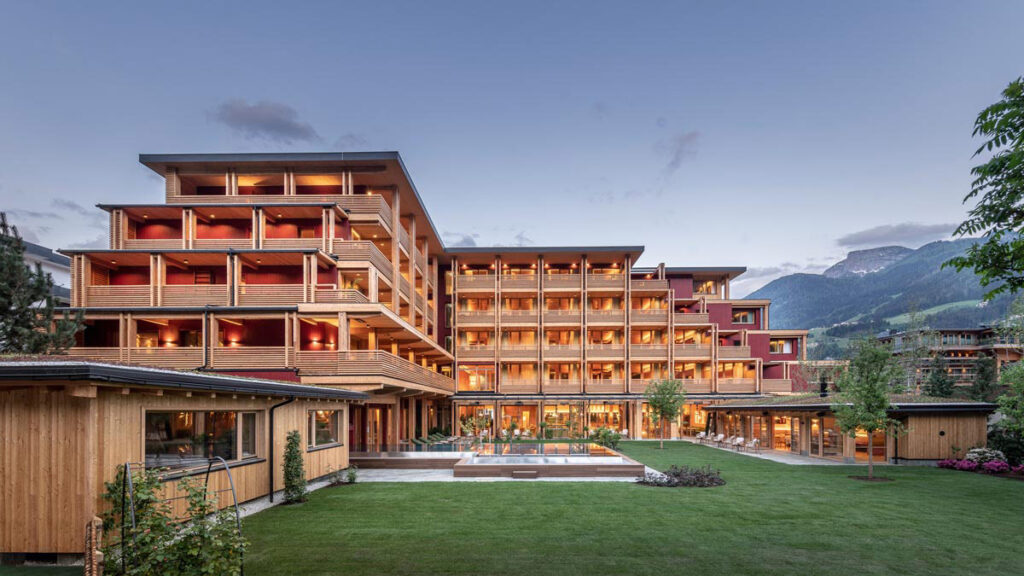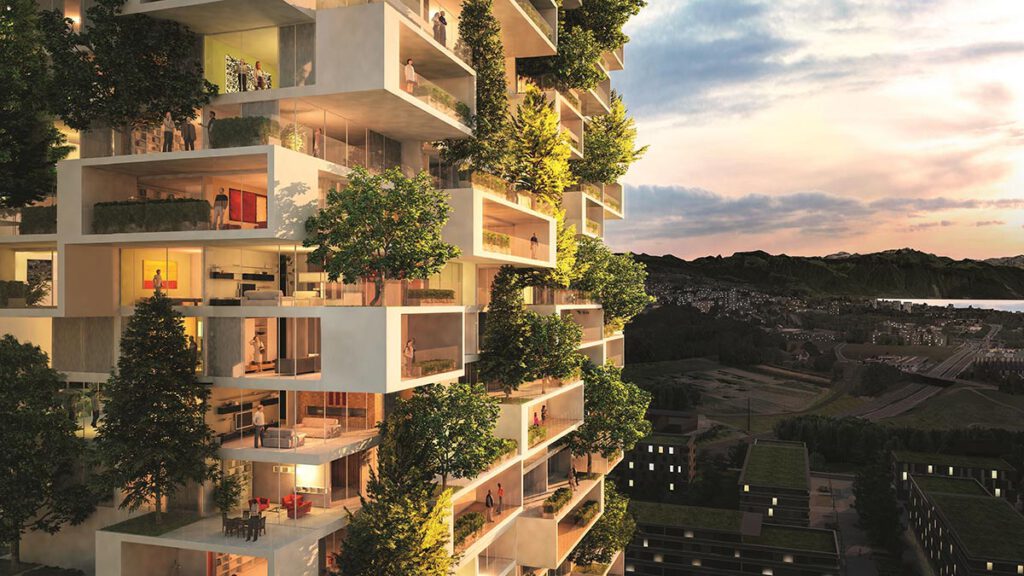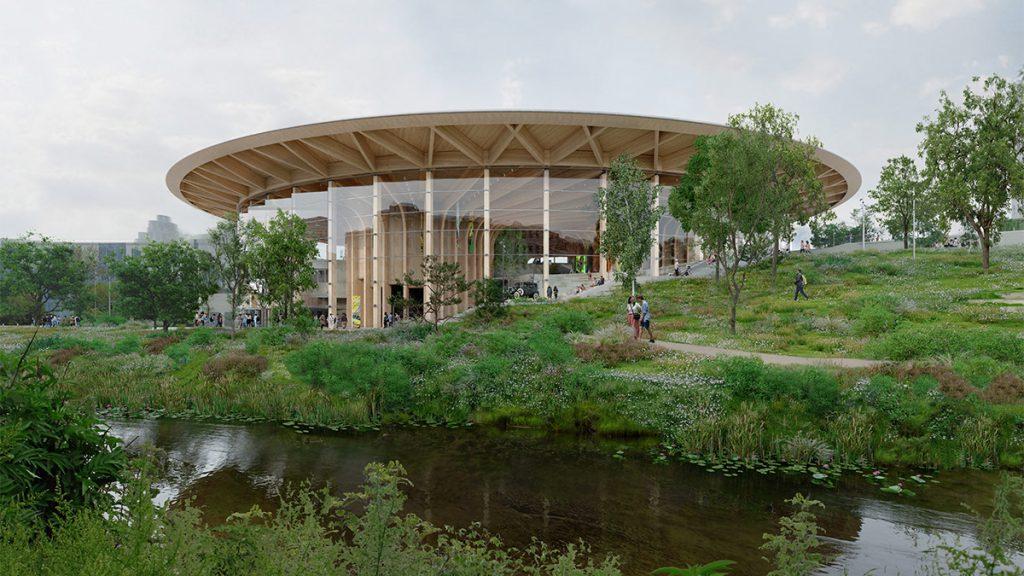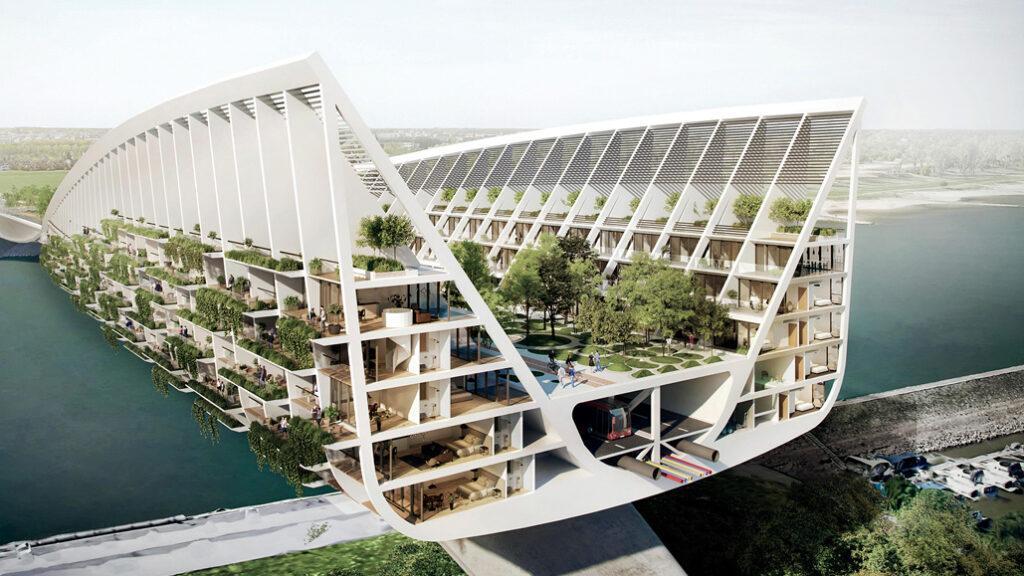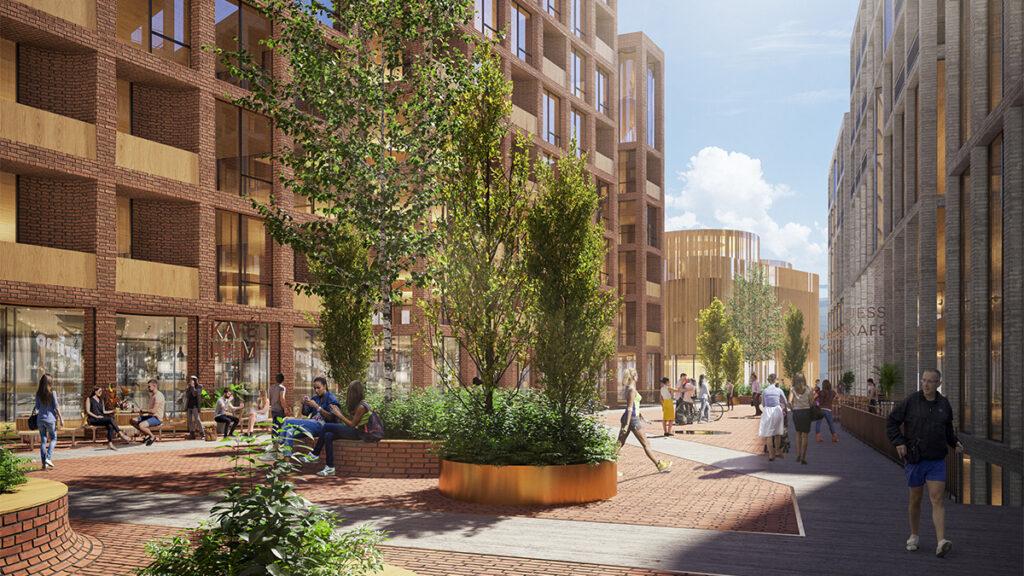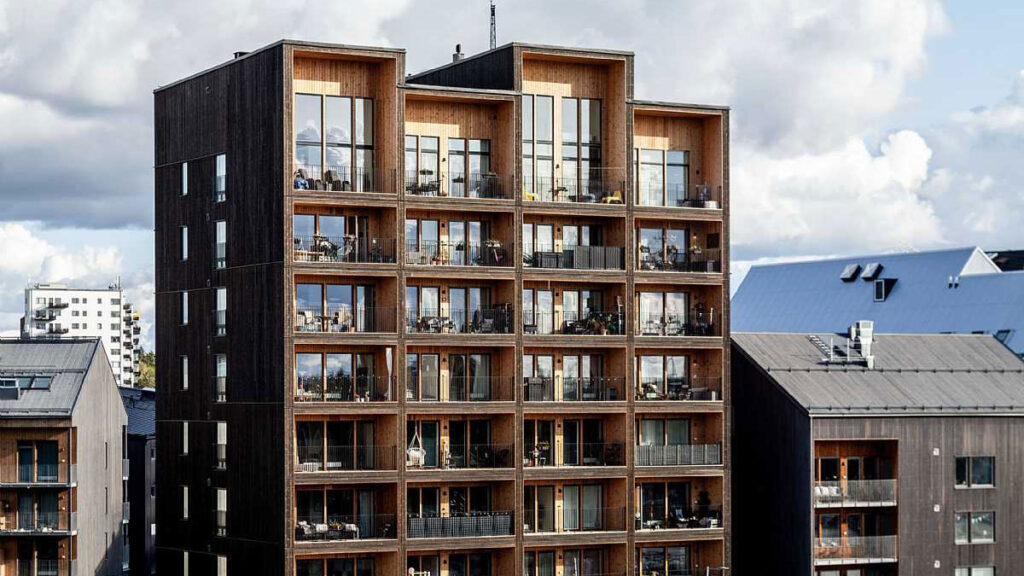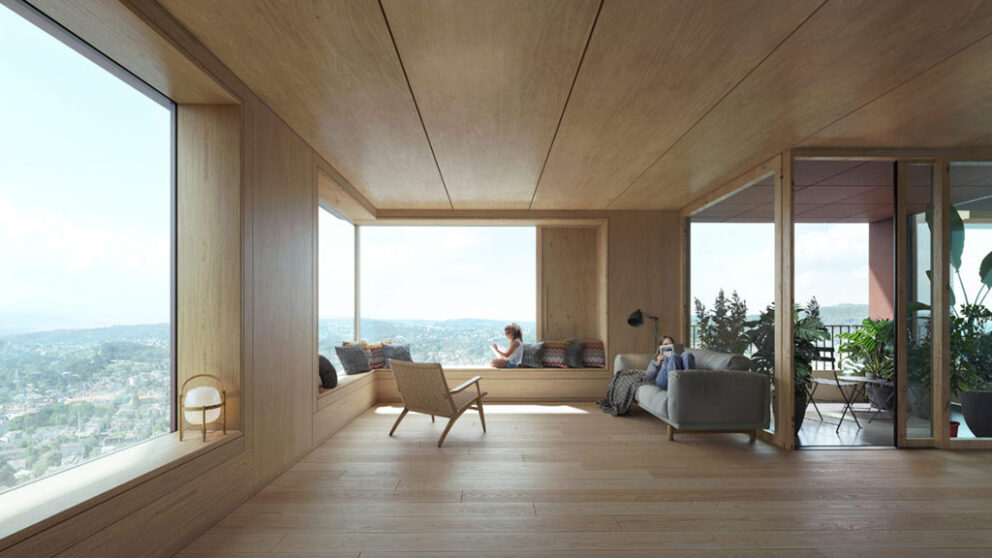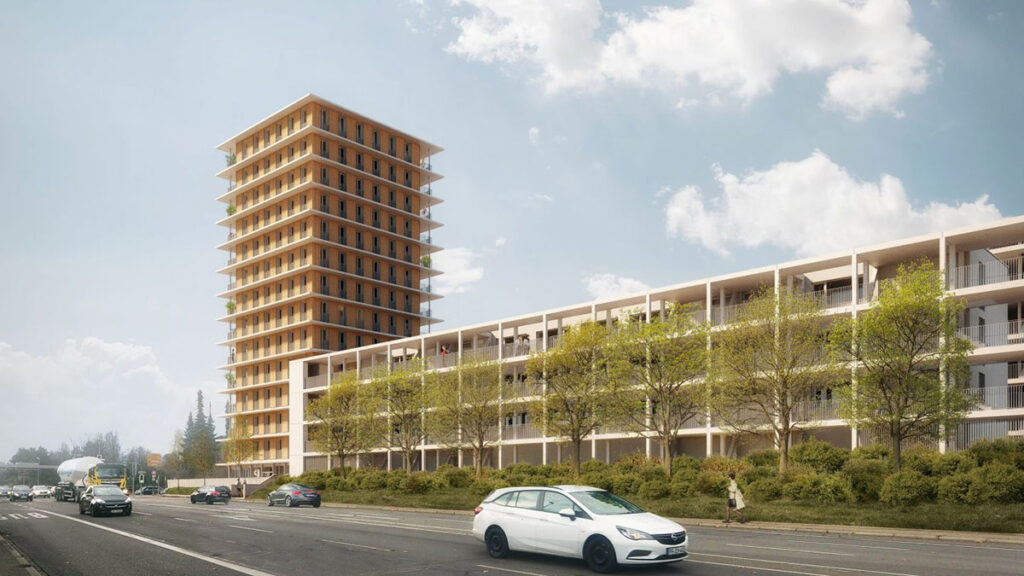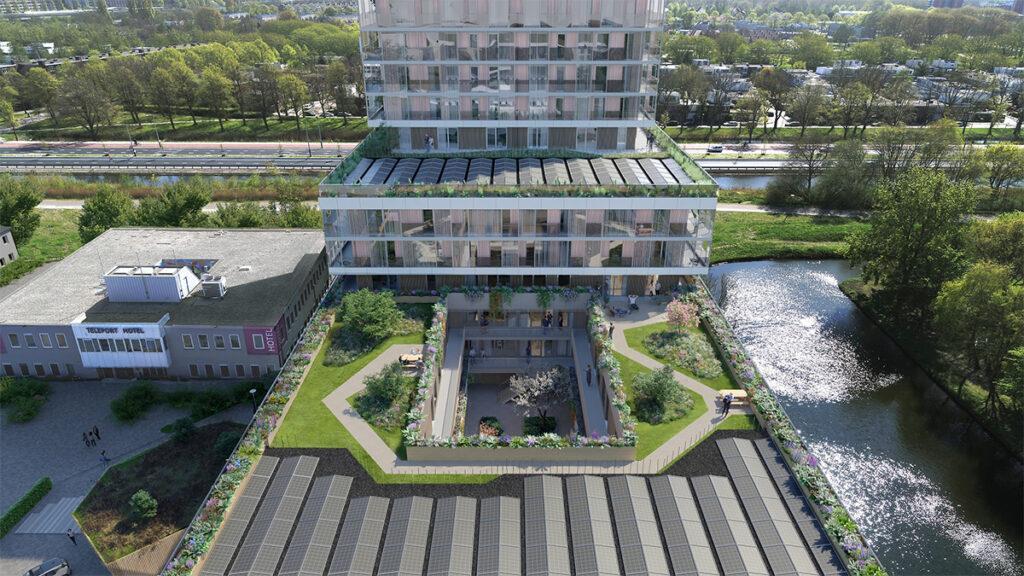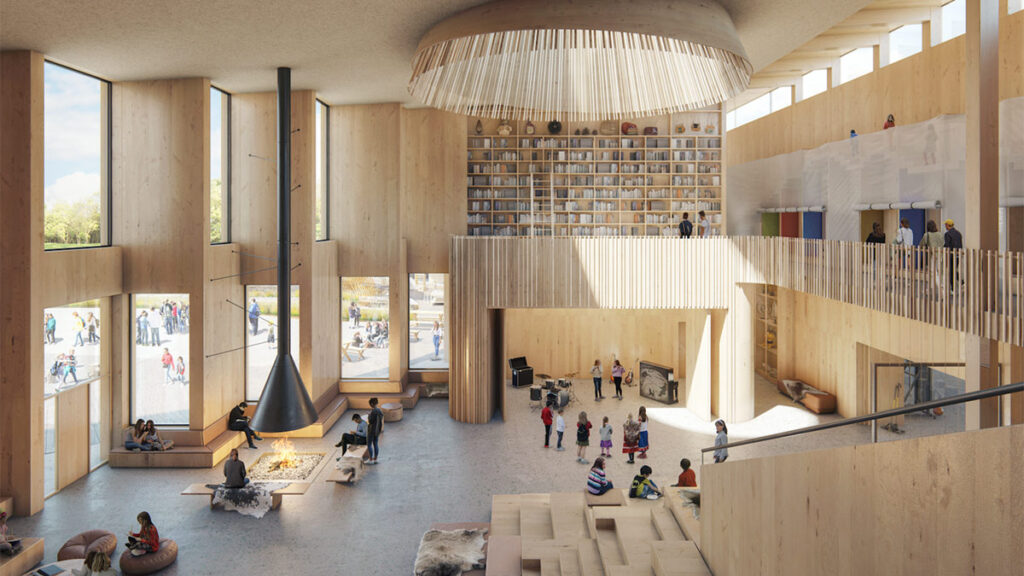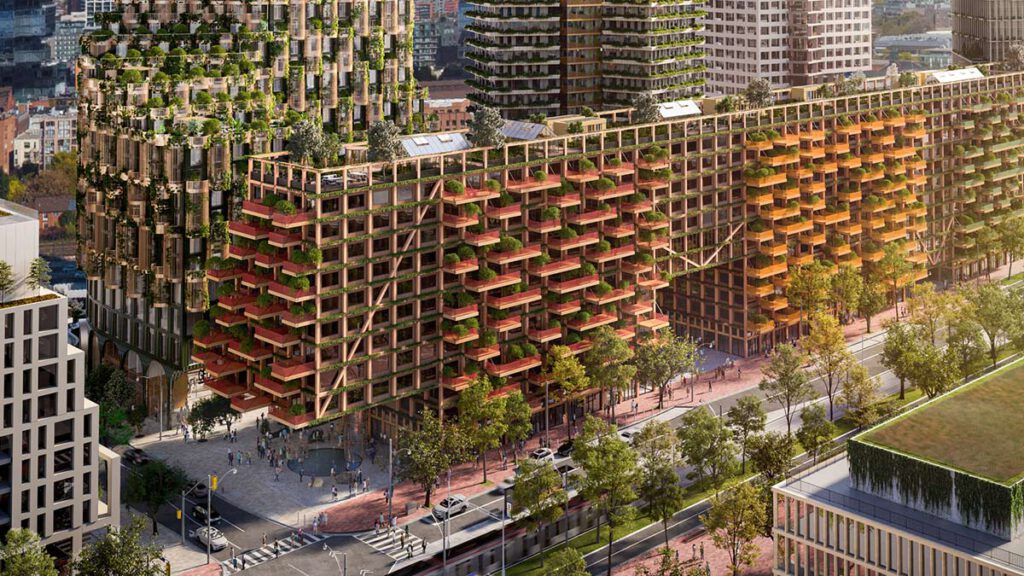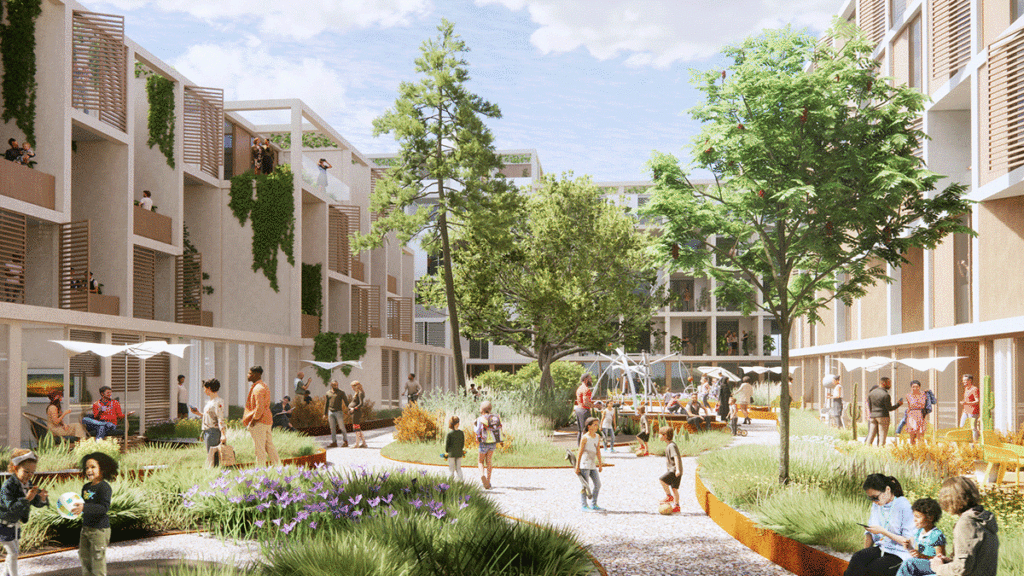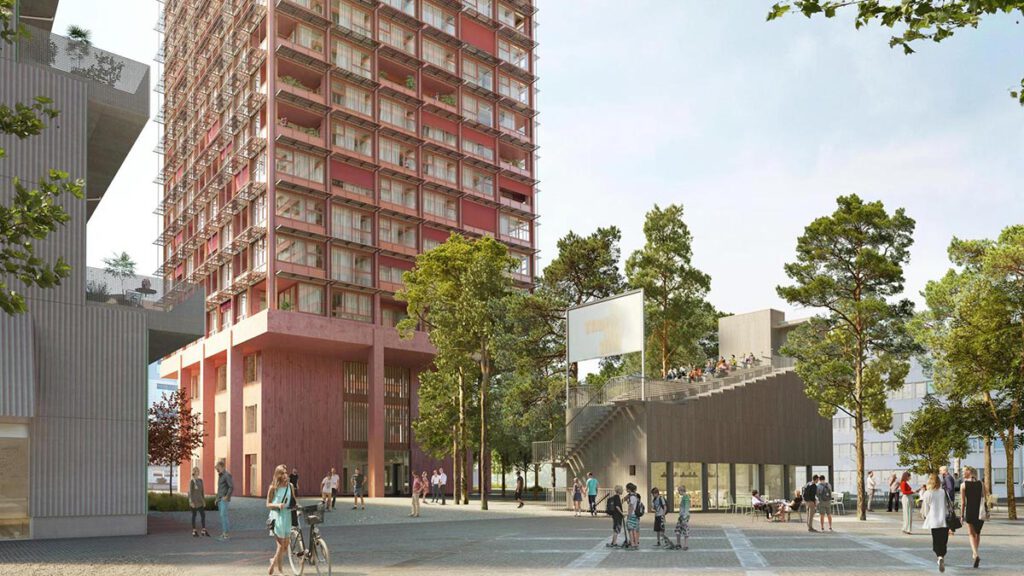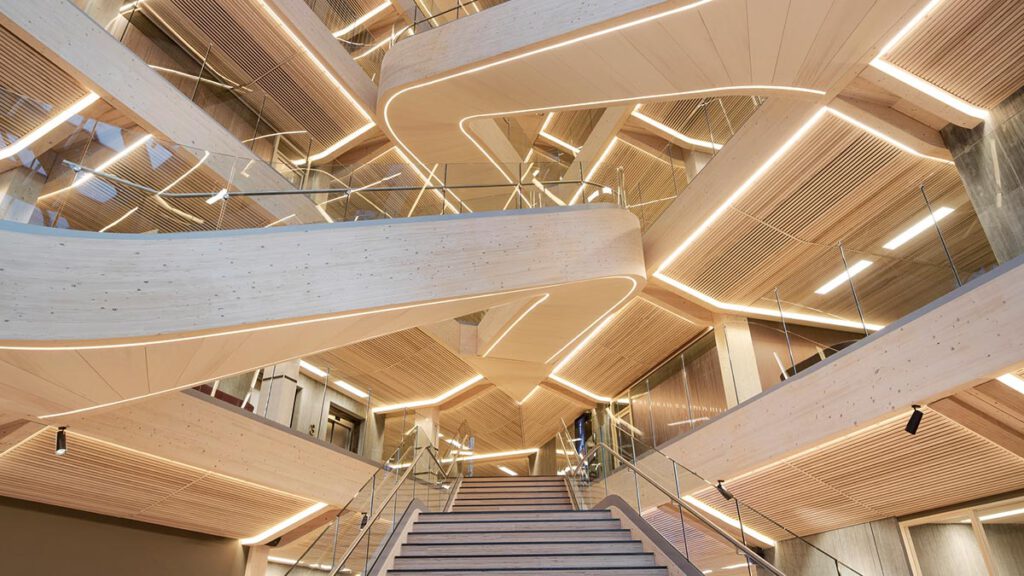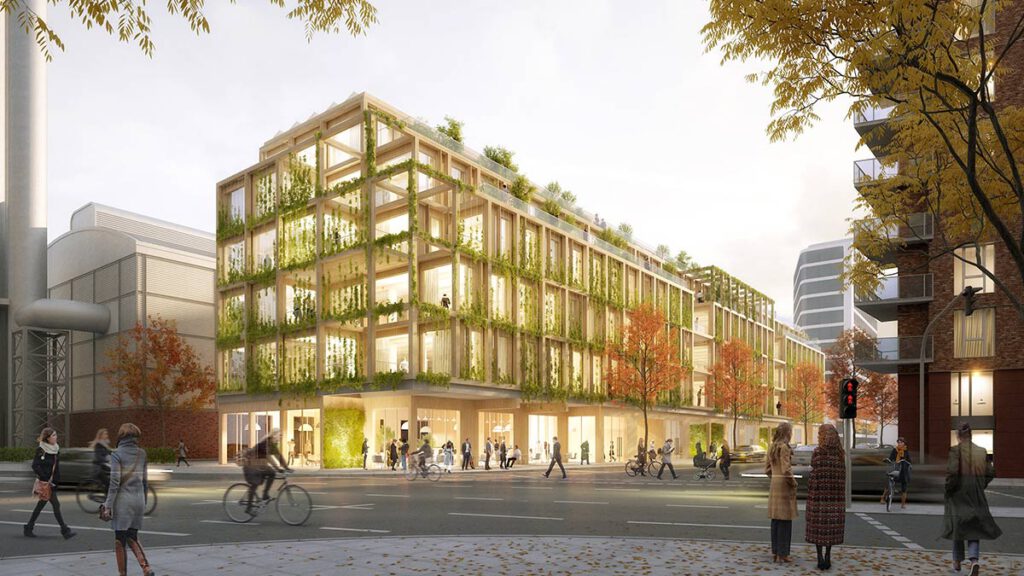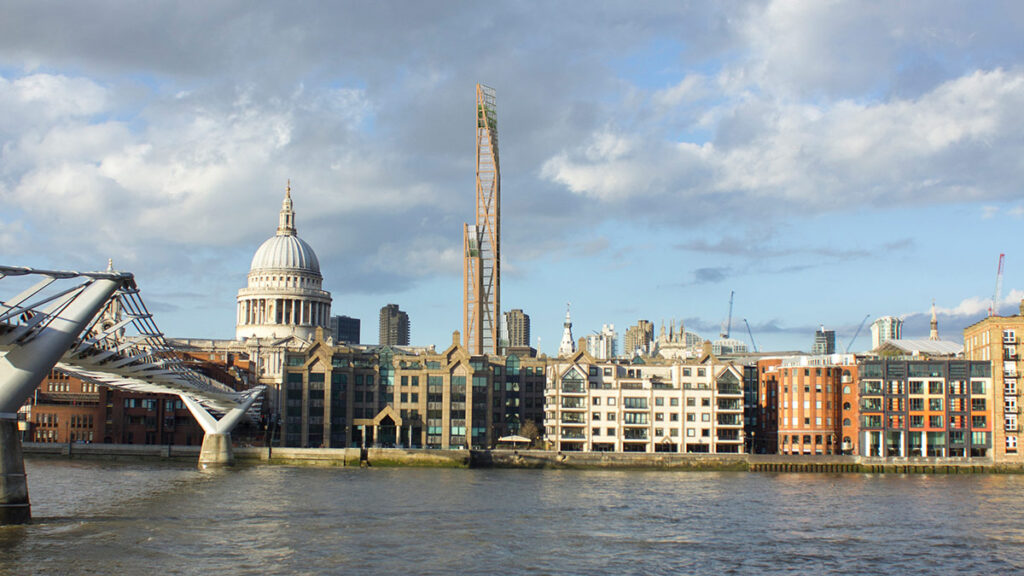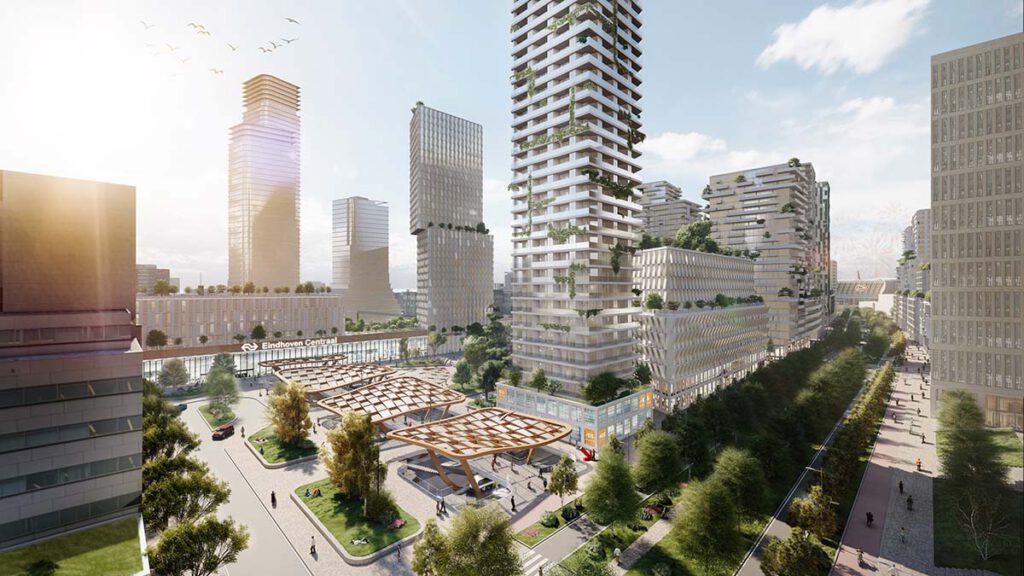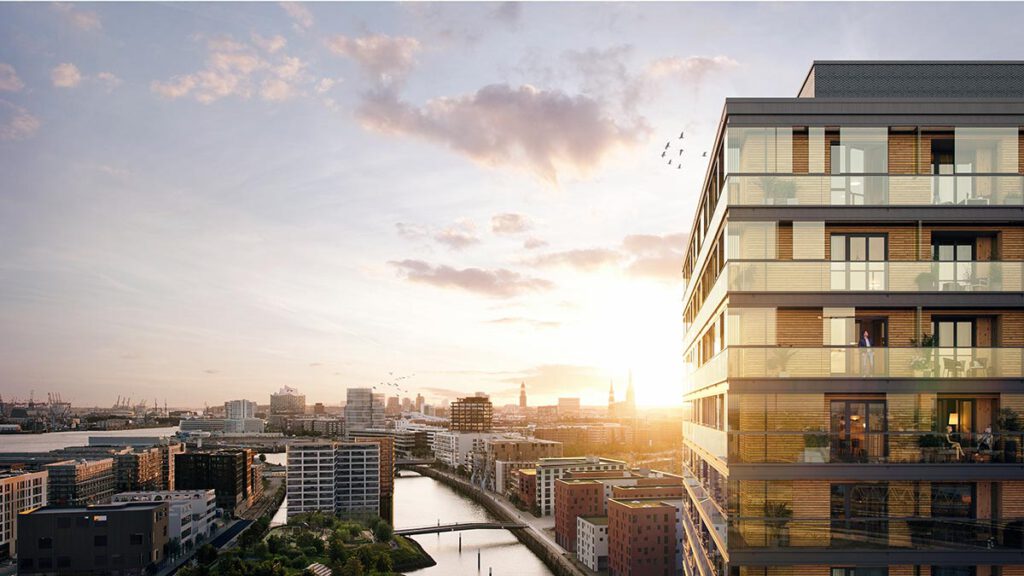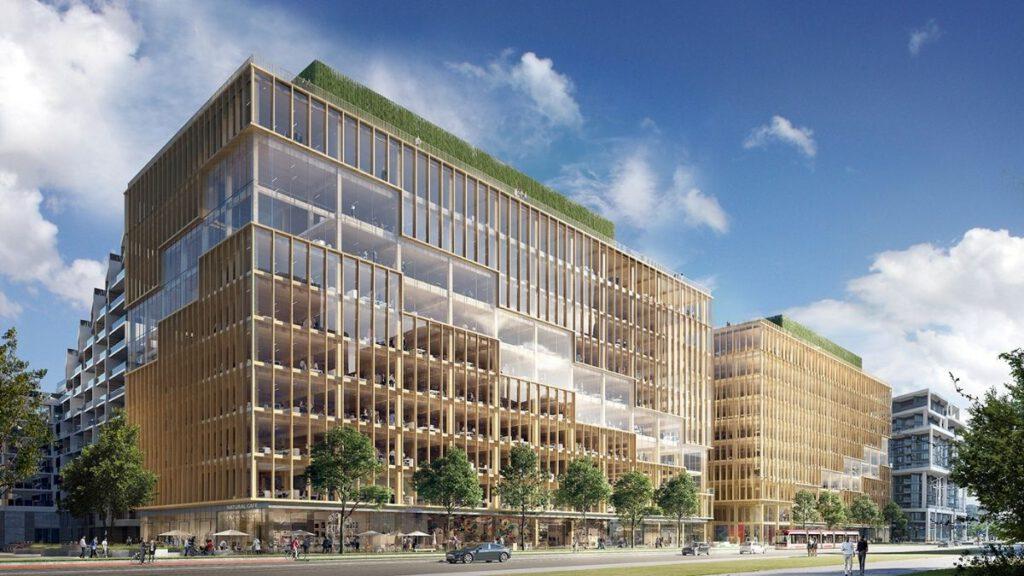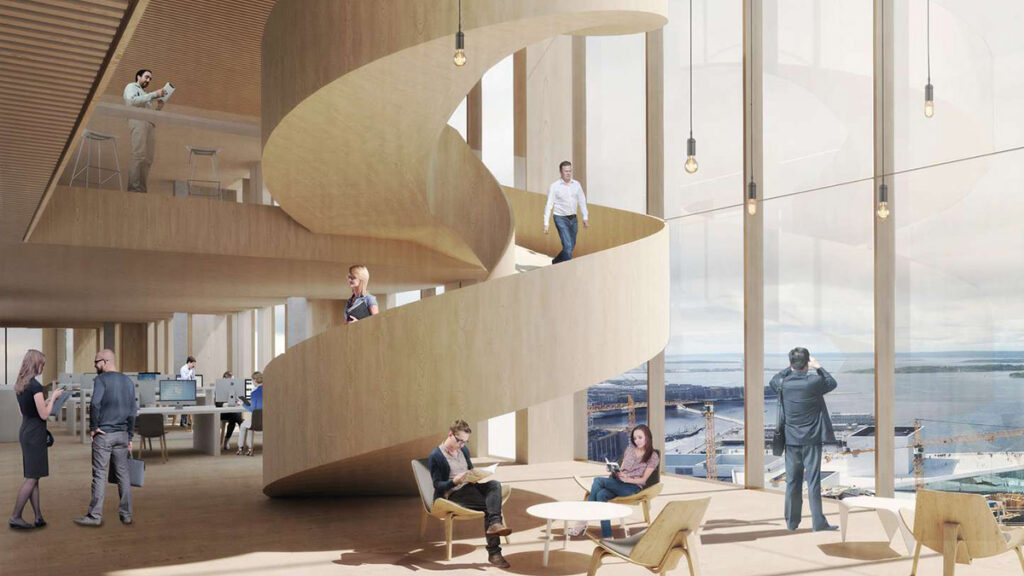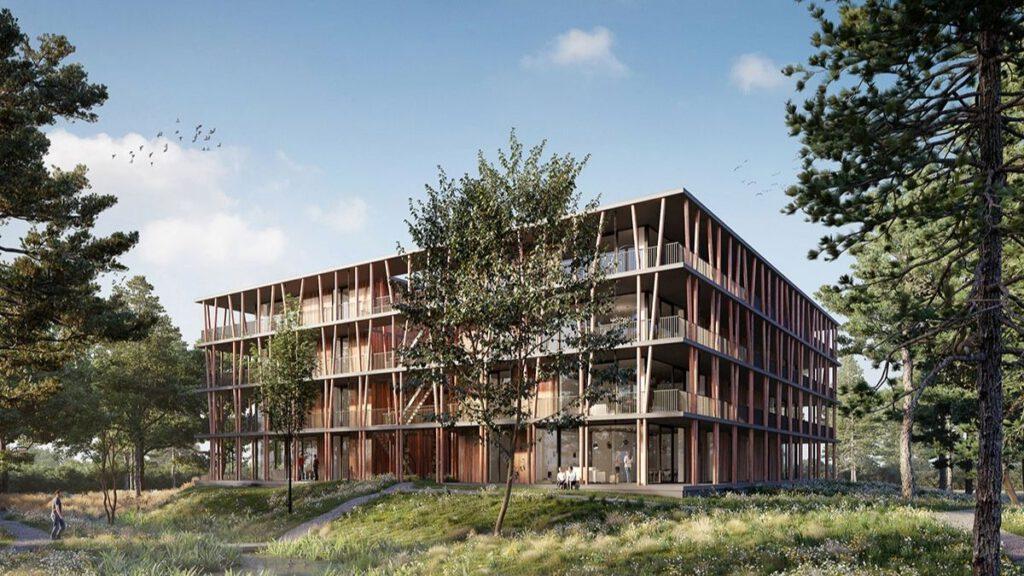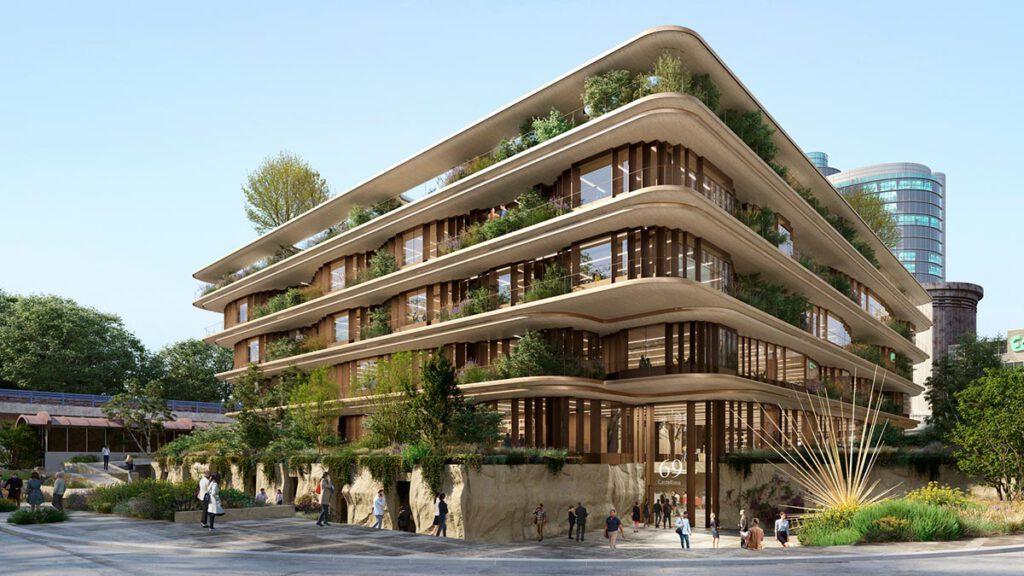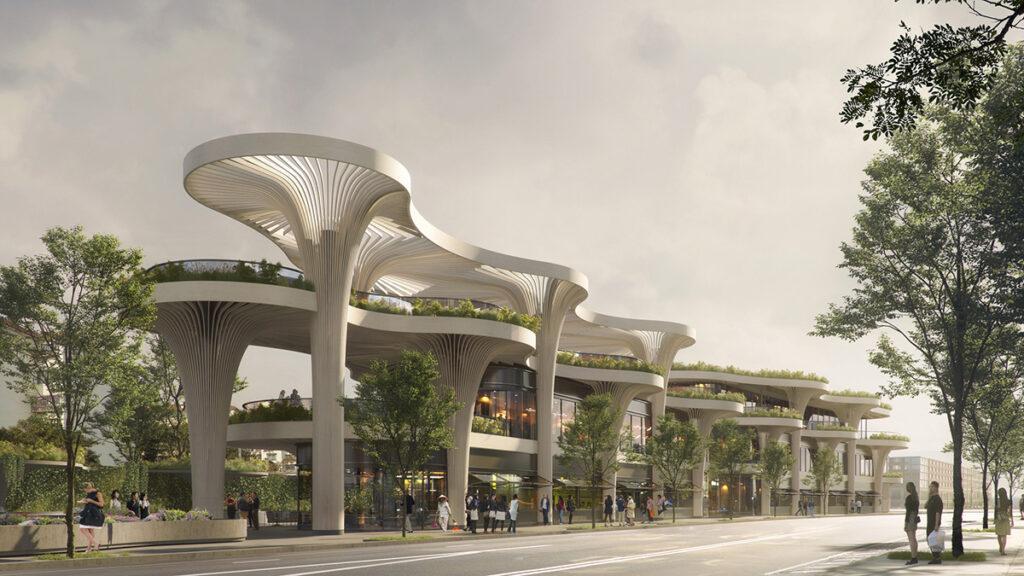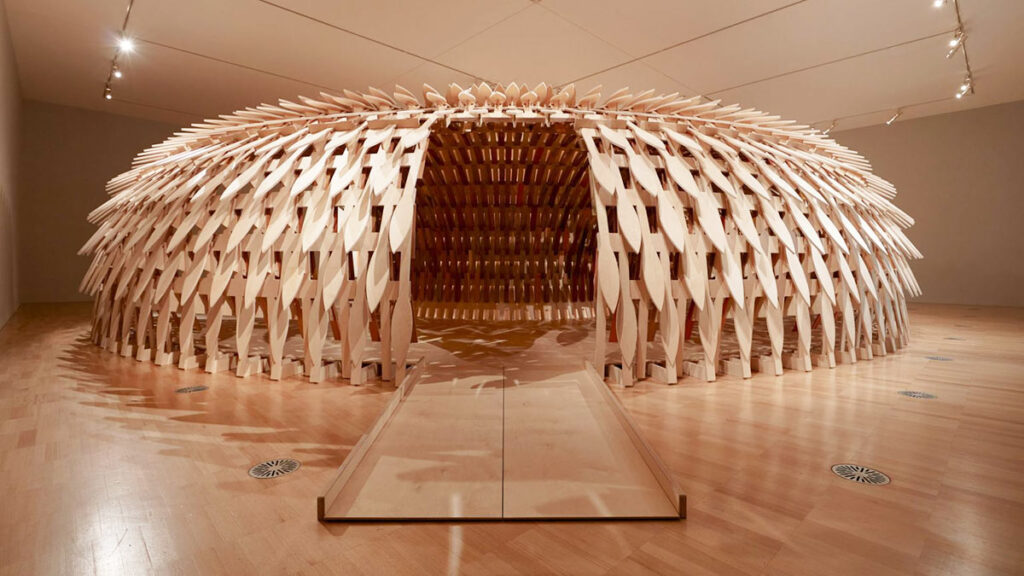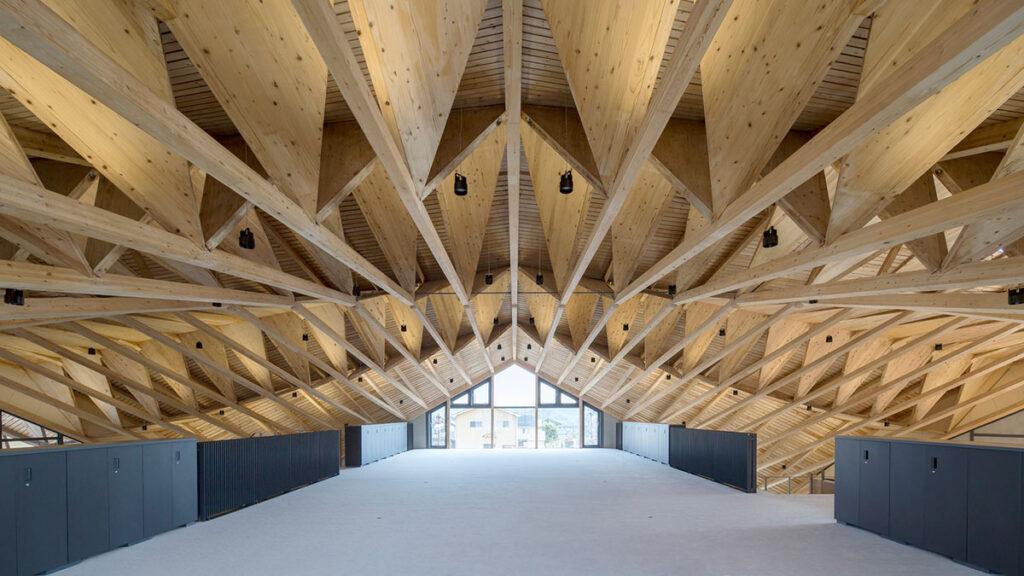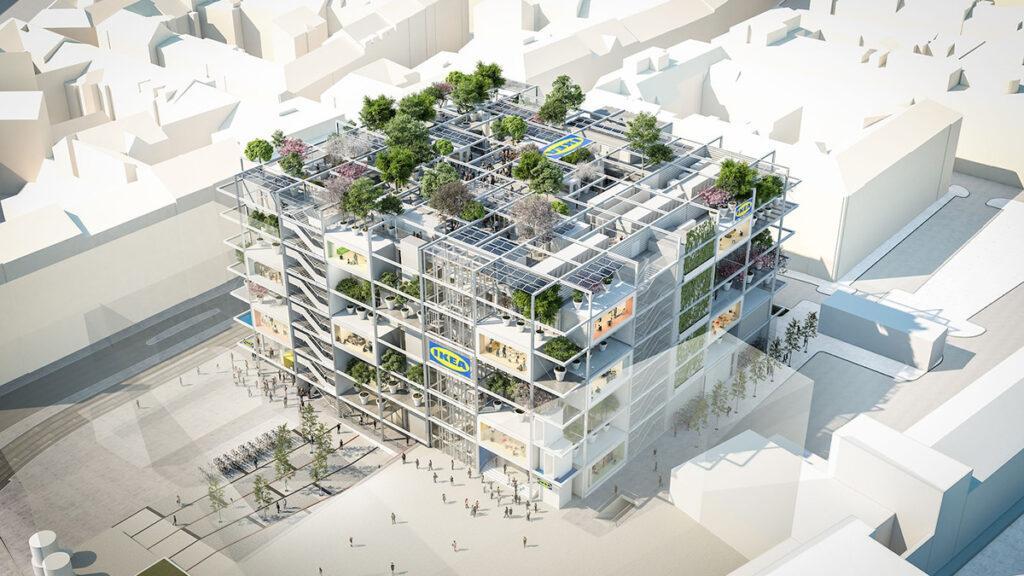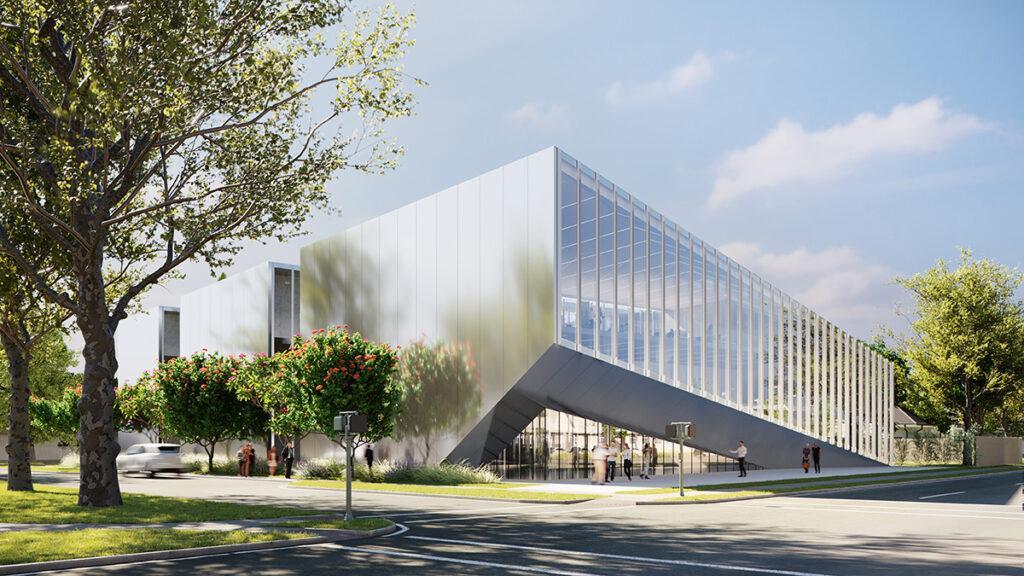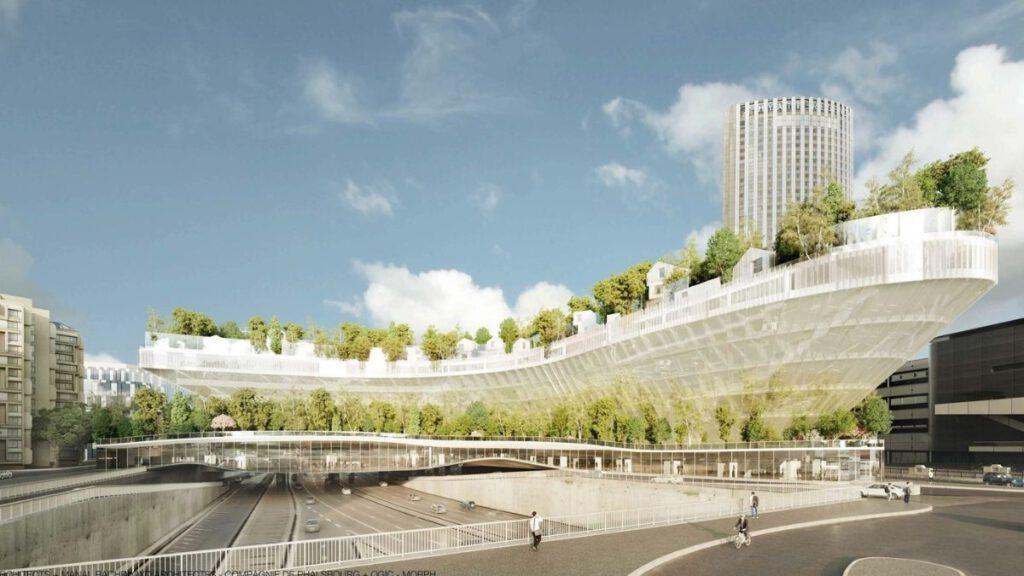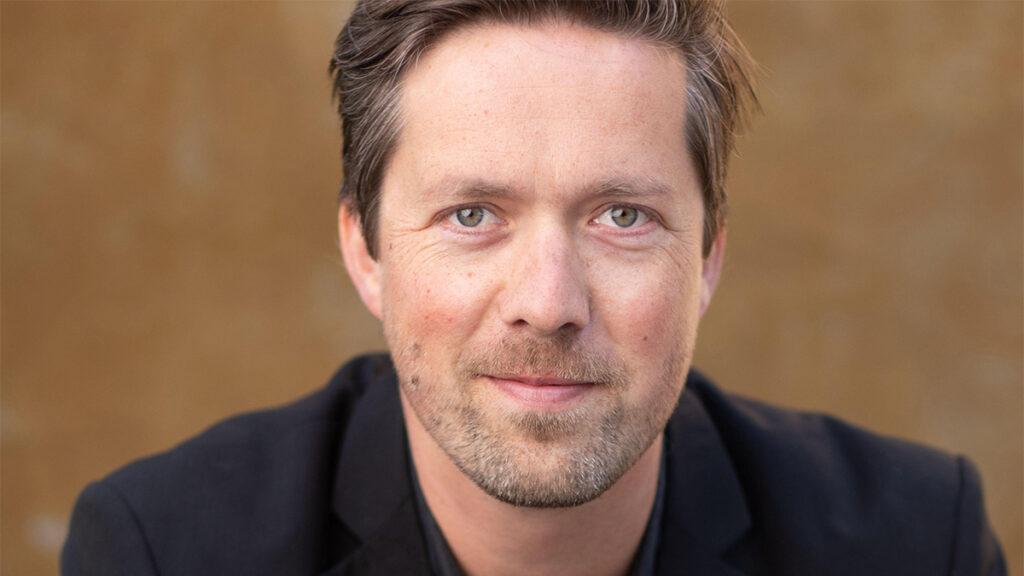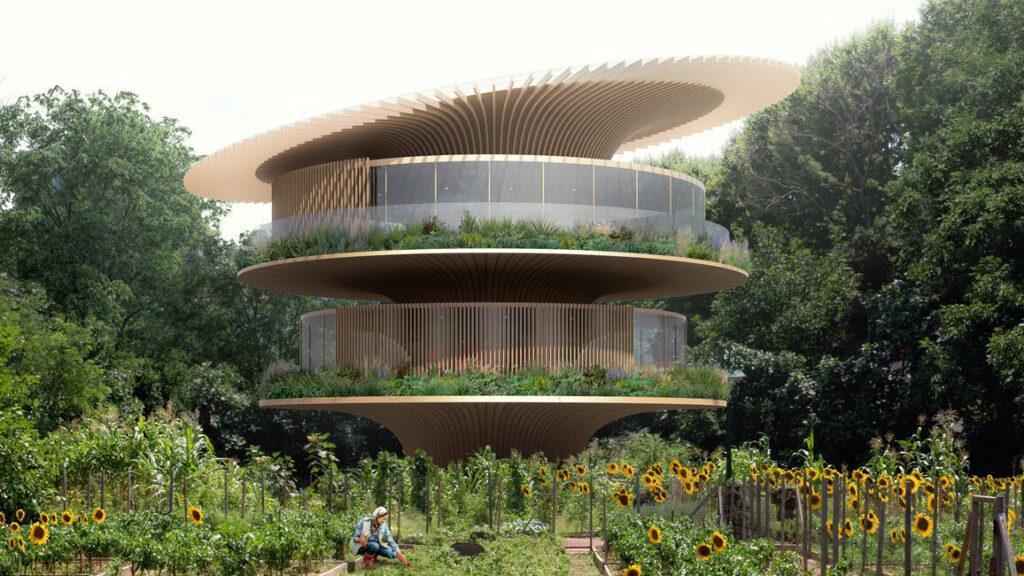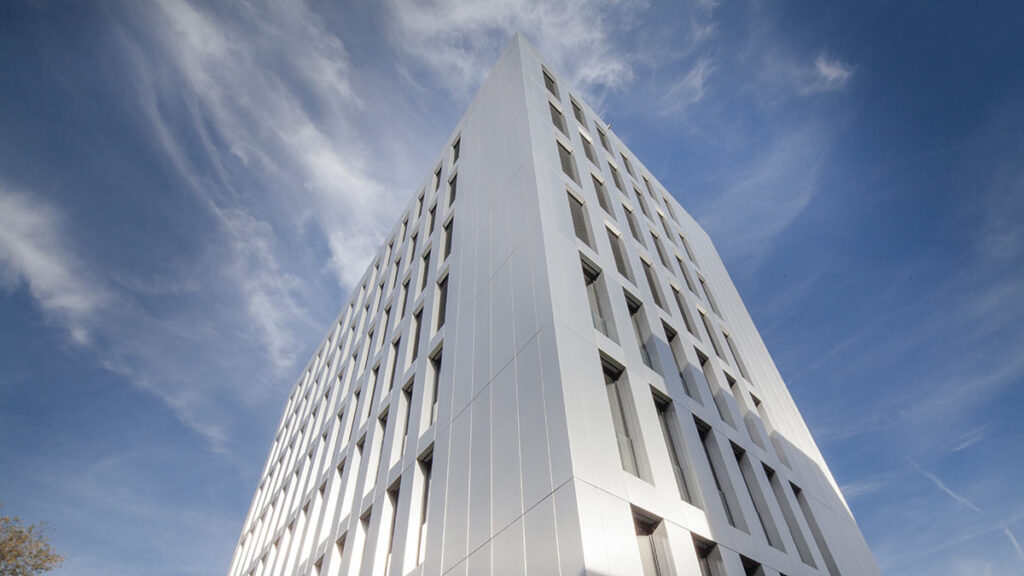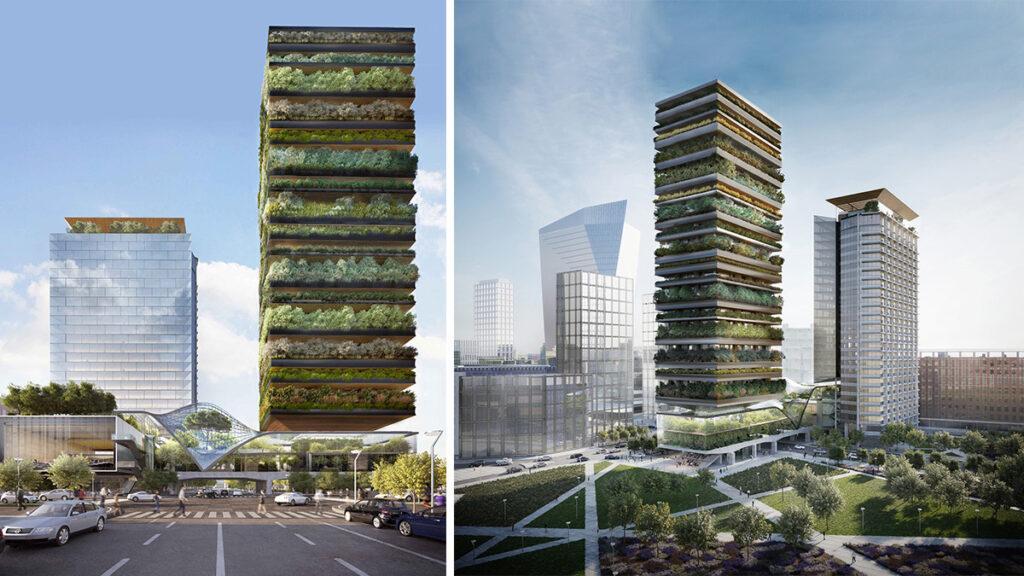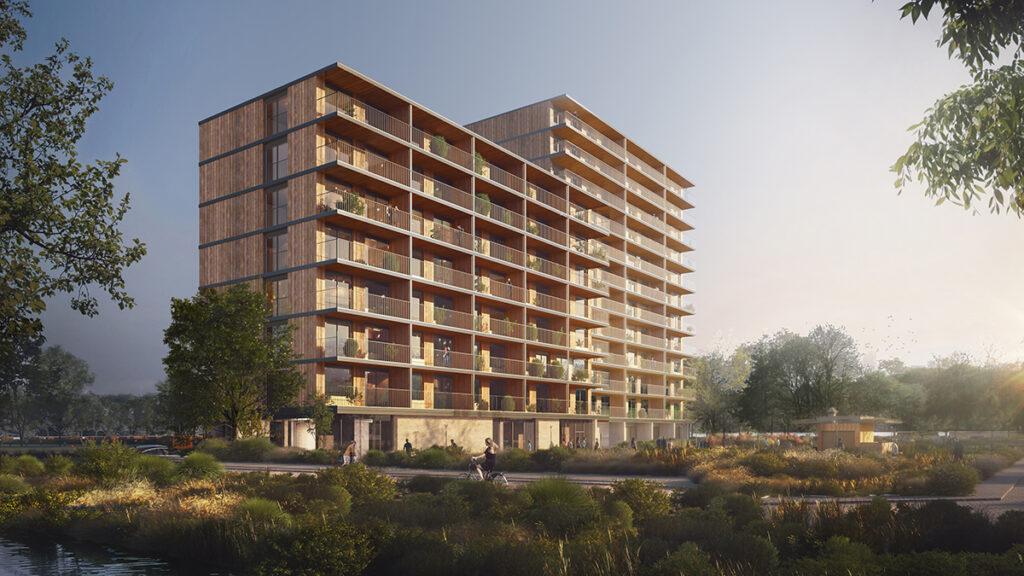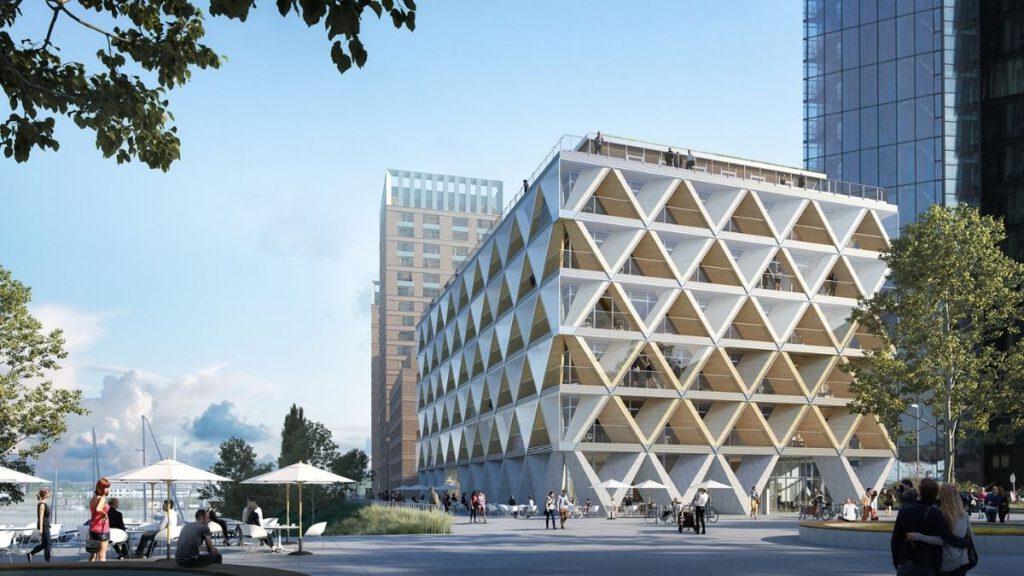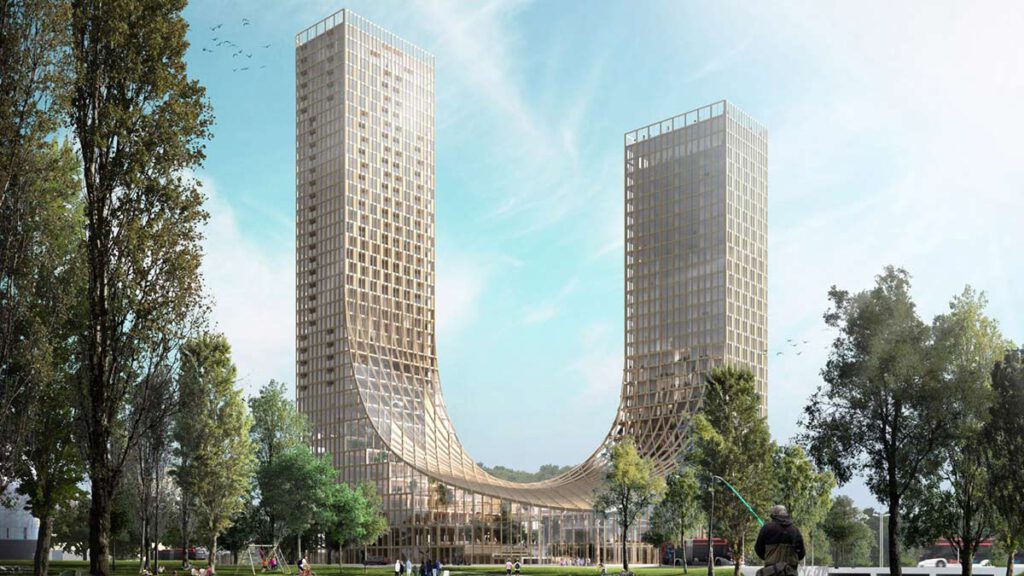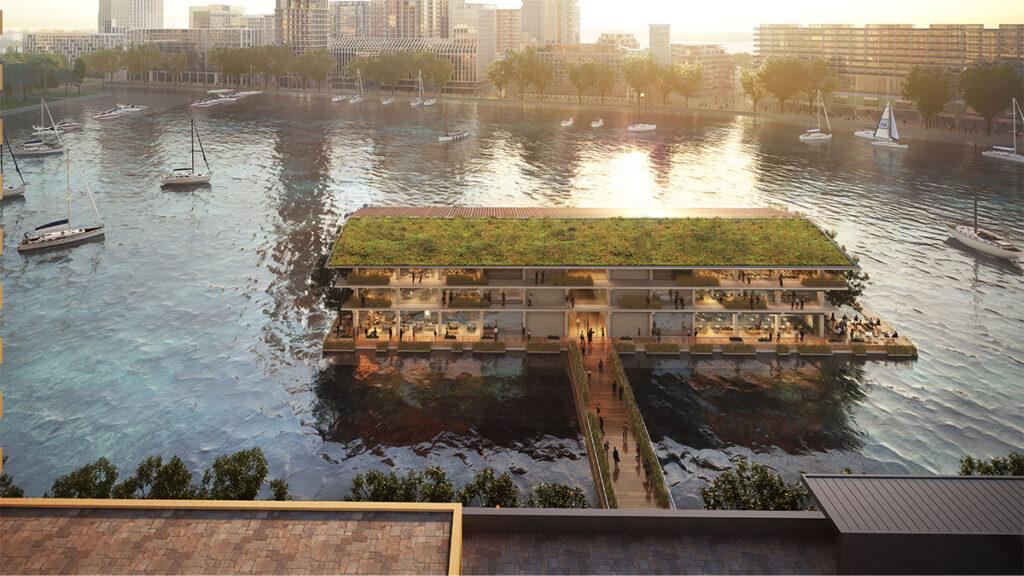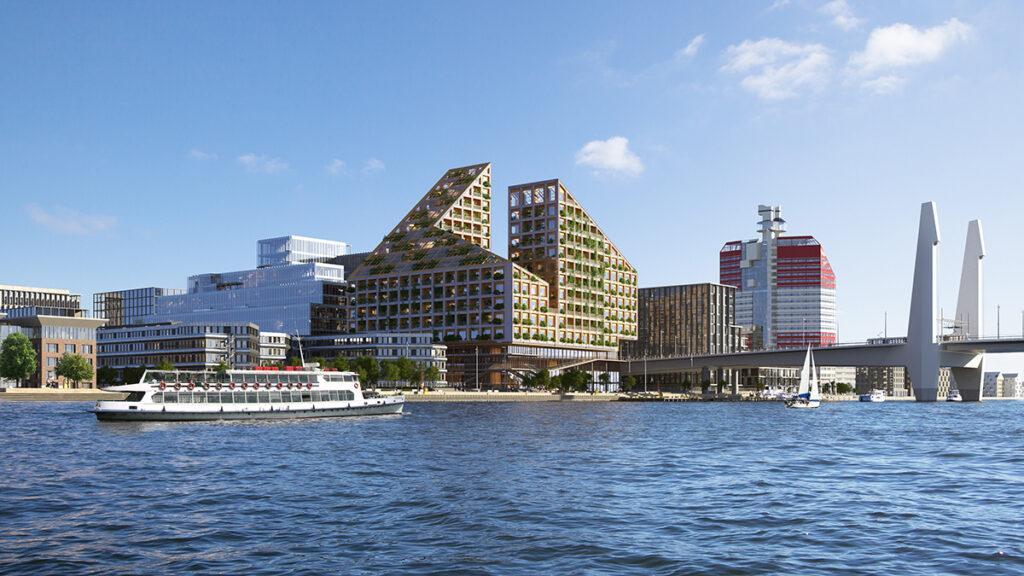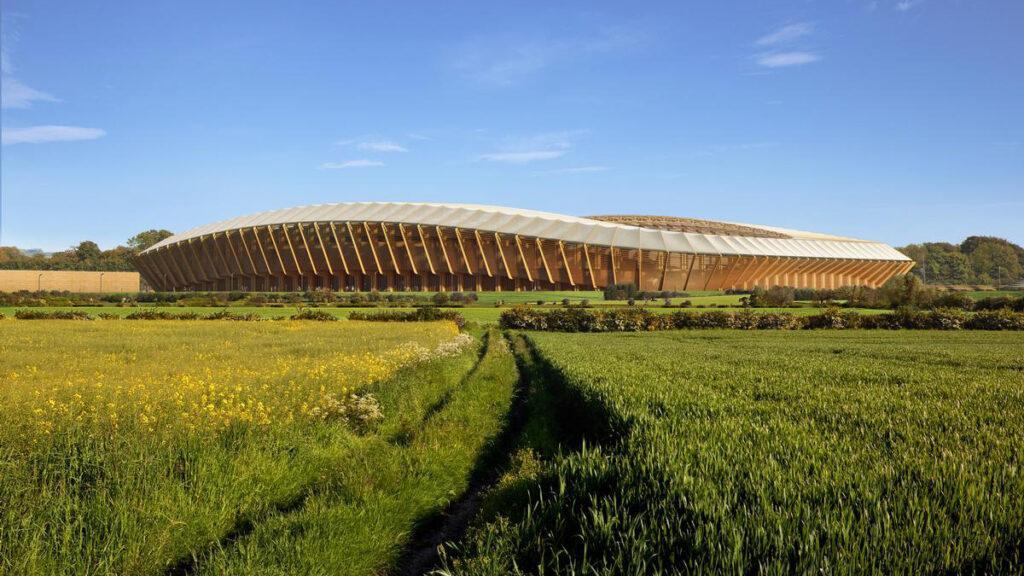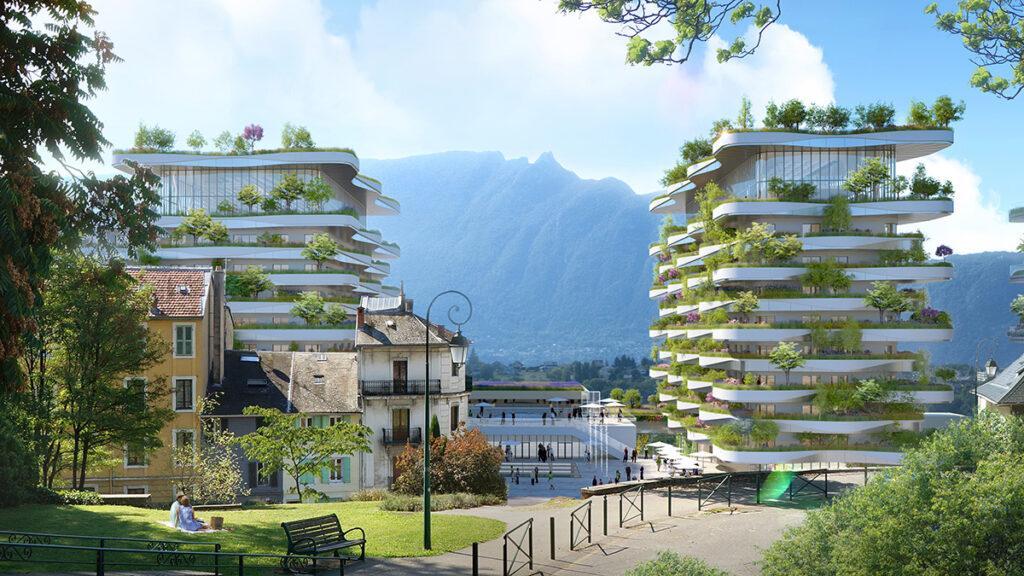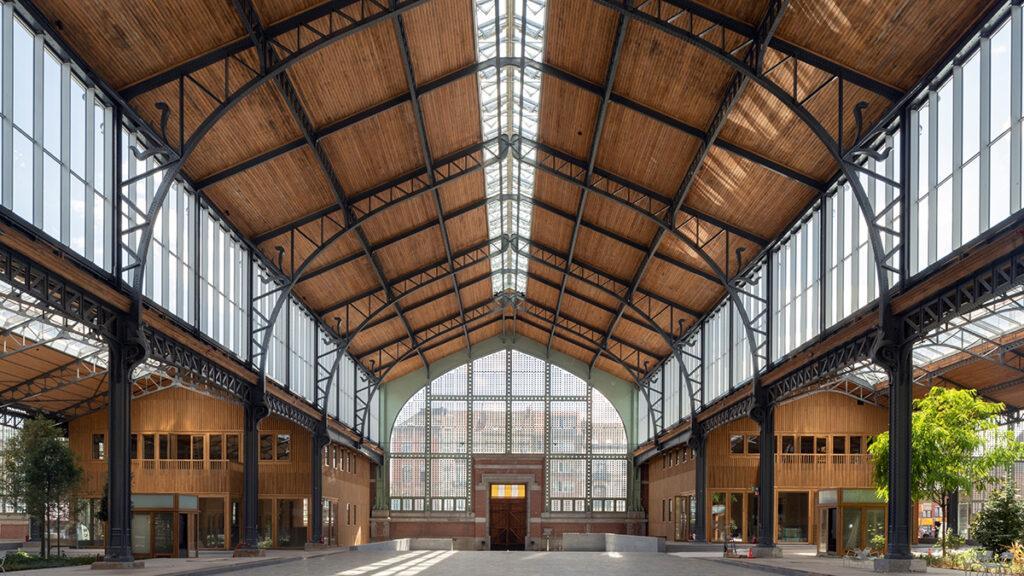
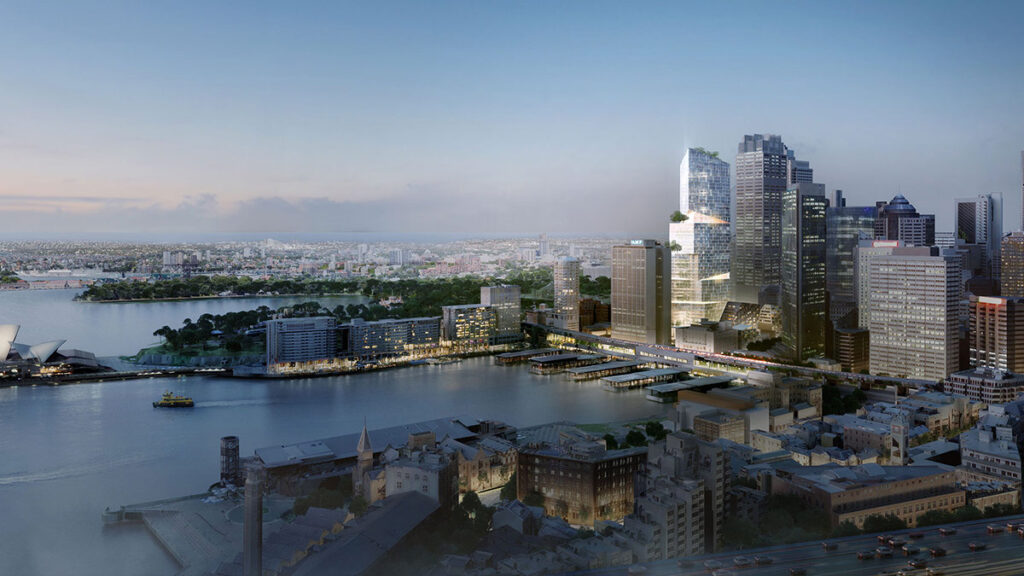
How to upcycle a high-rise
Danish architects 3XN are operating a separate division called GXN that develops green innovations. In this interview, Kim Herforth Nielsen and Kåre Poulsgaard talk about behavioural design, carbon as a market driver, and their radical high-rise project in Sydney.
3XN’s Copenhagen offices are found on an island in the district of Holmen, on the banks of the canal. They are situated in the listed Gunboat Sheds on Kanonbådsvej, which were used for making and storing boats before being converted into a stylish office location. “They are all timber buildings, some of them are over 200 years old,” says Kim Herforth Nielsen. “So don’t say that timber buildings cannot stand for a long time.”
Nielsen founded the architectural firm 3XN in 1986 together with two colleagues. As they all had the same surname, the company name was chosen accordingly. Its head architect solves the riddle: “3XN means three times Nielsen,” he explains. The name has since grown to represent innovative, sustainable architecture that places people and their behaviour in the spotlight, in line with 3XN’s guiding principle: “Form follows behaviour”.
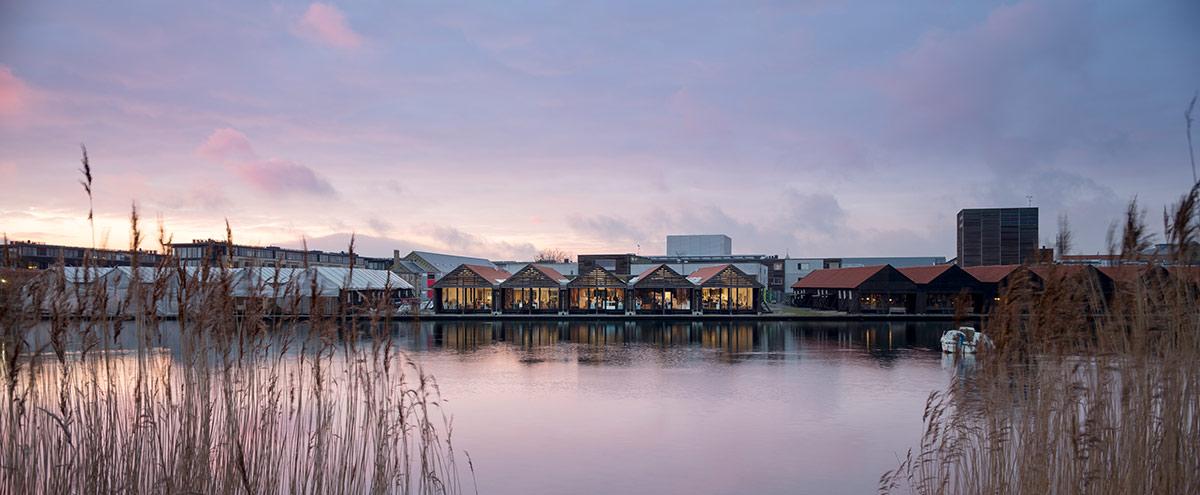
A prime example of their creative work can be found about three kilometres further north, at the gateway to the new urban district of Nordhavn. It is here that the UN City, a star-shaped landmark, was opened back in 2013. Yet even today, the building is among Denmark’s most sustainable structures. Their design for Shenzhen’s Natural History Museum introduced another superlative to the international stage of architecture.
By establishing the green think tank GXN in 2007, the company began to make architecture fit for the future. “Research data collected by us is fed back into the design process at 3XN,” explains GXN’s head of innovation Kåre Poulsgaard in a description of how the synergies work.
Why did you decide to separate the green innovation division GXN from the rest of the company?
Kim Herforth Nielsen: First of all, having a separate unit makes it easier to control the economic activities. In the beginning it was a major investment, but only a couple of years later GXN had become a self-sustaining division. And now we are earning money with it. We have 20 researchers working in GXN, and I don’t think there are many other architecture firms that have their own research division.
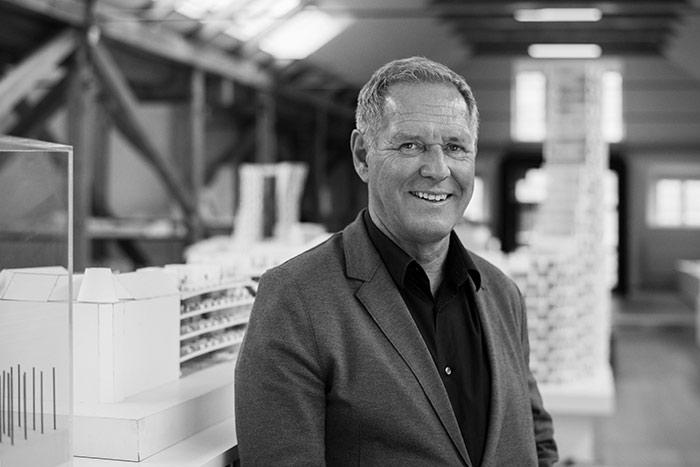
We upcycled an existing high-rise. It was an act of radical sustainability.
Kim Herforth Nielsen, founder of 3XN/GXN
What is the main purpose behind the research division?
Kåre Poulsgaard: There are some things that are hard to do within the normal framework of architectural projects. So, what we get to do in GXN is explore new ideas, test new technologies and then try to scale it all up for implementation into 3XN projects. This is where it becomes exciting, and we want to make sure we have an impact. Besides our consultancy work with 3XN, about half of what we do involves externally funded research projects, collaborating with universities, new technology start-ups, and other partners.
Nielsen: With huge investments like real estate projects, clients tend not to experiment very much. Our research from GXN helps us in doing exactly that because we can qualify our decisions better. We can make architecture more exciting because we have more knowledge about what works and what doesn’t.
You have a “form follows behaviour” approach to architecture. Can you elaborate on that?
Nielsen: We don’t design a sculptural building and then put all the functions in, we do it the other way around. I think the most exciting way to design is to think about what is going to happen in the building and around it. How will people behave in the building? We always start out with that question before we start designing. The behaviour that we want to happen informs the design. That way we can explain why it looks the way it looks with a lot more clarity, both to ourselves as well as to the clients. Because the design has been optimized for the people.
Poulsgaard: There is a research aspect that might be worth capturing here. I am an anthropologist by training and when I first heard that most architects don’t get to analyse their buildings after completion, I was a bit lost for words because there is so much information, knowledge and value out there. So, what we are doing with 3XN and GXN is going back to our buildings to see how the design, ideas and strategies are performing and how people actually use the building. By collecting qualitative data and feeding it back into the design process, we can close the feedback loop and become better designers.
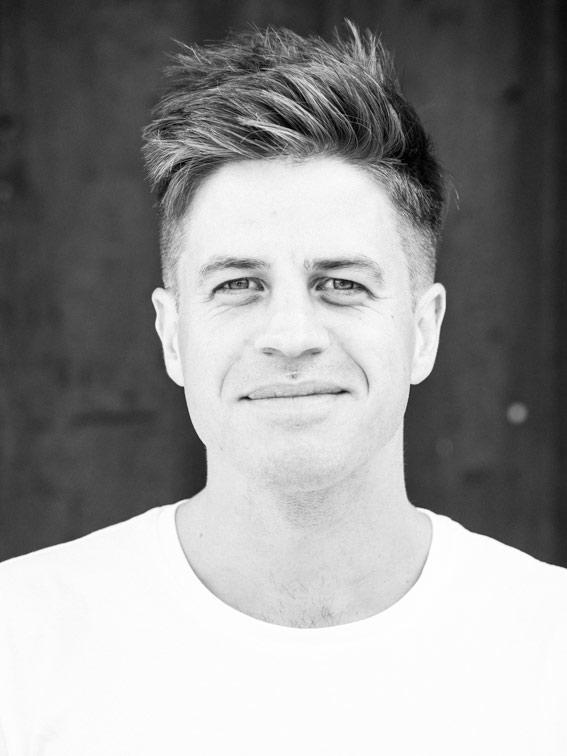
By collecting qualitative data and feeding it back into the design process, we can close the feedback loop and become better designers.
Kåre Poulsgaard, Head of Innovation at 3XN/GXN
Within this concept of behavioural design, where does sustainability come in?
Nielsen: Sustainability is part of everything that we do. We look at it in a very holistic way. It’s not only about energy, materials and green buildings as such, it is also about how the building reacts to the people in and around it. You can make a building that lives up to a certain green standard but doesn’t function well. Therefore, I think everything has to be taken into account when we design. Thinking about behaviour is another form of sustainability.
The result of your approach can be very sculptural. Can you name an example of a sculptural form that was shaped by sustainability parameters?
Nielsen: The Olympic Headquarters in Lausanne, for example. The building as well as the International Olympic Committee itself is all about movement. We worked with the idea of movement in an informed way, using digital tools as well. We shaped and optimized the whole facade in order to keep out the sun’s heat as much as possible. But also to allow people to see out and the daylight to come in. The whole faceted facade is very sustainable. It received 93 points out of 100 for the new LEED v4 certification, making it the world’s most sustainable building to date.
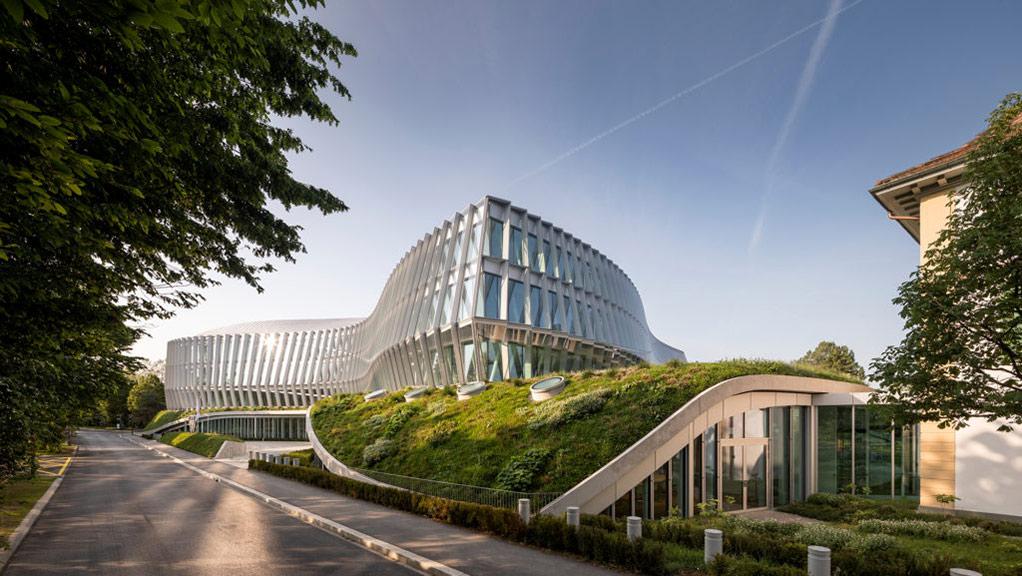
A lot of contemporary buildings – like the Lemvig Klimatorium by 3XN – incorporate public spaces inside, outside, and even in their facade. What is the motivation here?
Nielsen: This is part of our philosophy whenever we talk about architecture and behaviour. It’s about how the buildings react to people, inside and outside. The more generous you can be to the surroundings, the better the outcome will be both for the building itself but also regarding the public response. As we say: There is no reason to build anything unless it makes the place better.
There has been criticism of some of the “most sustainable buildings”. Although they meet the highest sustainability standards, they have a massive amount of embodied carbon. What’s your take on this?
Poulsgaard: We are seeing a rapidly growing focus on embodied carbon. This is a metric that we are increasingly being asked to include in our designs. We are trying to reduce both embodied and operational carbon through design and material choices. Right now, those demands and those projects are driven by the markets that are reacting to a predictably rising price on carbon emissions. There are large-scale tenants and developers who have 2030 net zero pledges that are fast approaching. Everybody in the industry has to learn how to reduce emissions. That focus is going to be ramping up over the next couple of years.
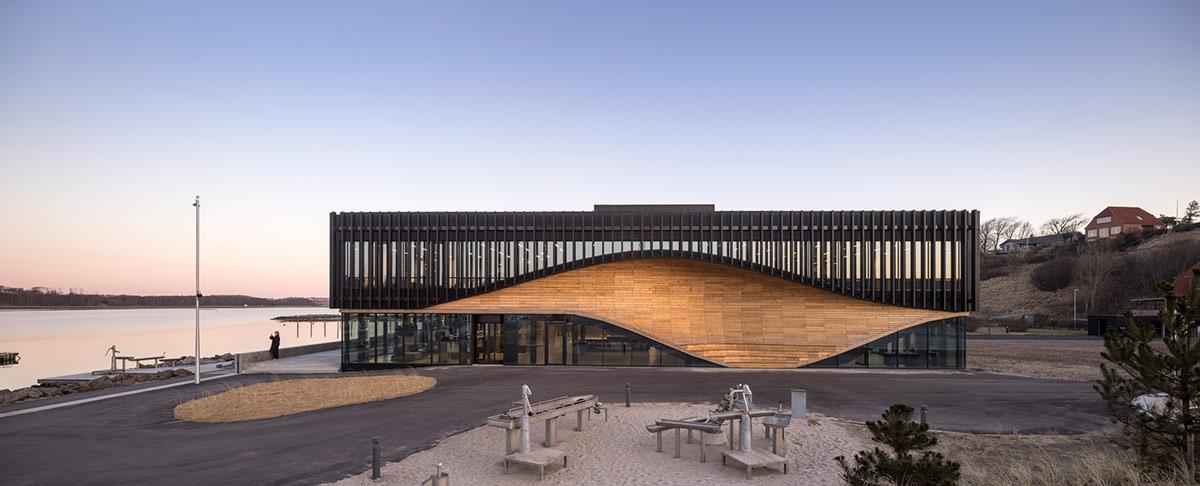
There is no reason to build anything unless it makes the place better.
Kim Herforth Nielsen, founder of 3XN/GXN
So the market forces are way ahead of the sustainability standards?
Nielsen: Yes, indeed. In this regard London is progressing really fast. We just received a request from a big developer and the first question was: How do you work with carbon? This is partly because they have to meet their carbon targets. But also because the tenants are very aware of where they are moving into. There is a significant sustainability movement in London right now. Eventually some good things will come out of this pandemic, because we have to rethink workspaces and buildings.
Poulsgaard: We can see a drive towards premium-quality offices right now, triggered by the changing needs to the office market. We can see that tenants regard emissions and sustainability as part of what it means to be premium. Together with behaviour, access to more green space, and more fresh air.
Experts say that we have to start thinking beyond the usual timeframe of architecture projects. How far ahead can and should an architect think?
Poulsgaard: A building is not finished when construction has been completed. The idea of “long life, loose fit’ is baked into 3XN’s design approach. The buildings are adaptable to different types of uses over time. In general it’s about taking a more long-term view about what happens in the building in terms of behaviour, materials and future demands. We can design a building for disassembly so we can take it apart and reuse the materials, making sure we save all that information for future generations.
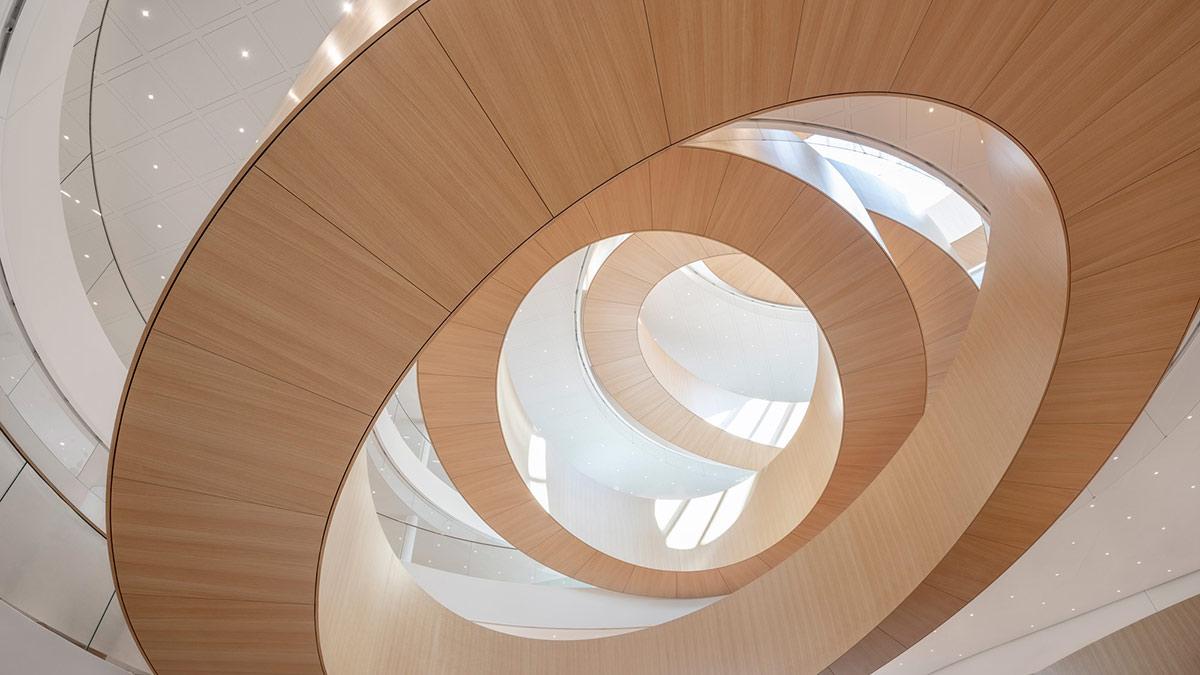
Nielsen: We are currently working on the most sustainable high-rise in London. With a big project like that, six to ten years will probably pass before it’s completed. And so it is essential for the client to be sure the high-rise will be relevant when it’s finished. That’s why they also hired GXN to look into the future. They want to know where the world is heading. With GXN we can create what we call futurology reports. We take that responsibility of thinking ahead very much on our shoulders because that’s what informs our design.
Do we need to rethink the way we develop real estate projects?
Nielsen: I think we have to change our behaviour, but that’s not necessarily a bad thing. We have to come up with new ideas that add more quality. We are just finishing off our first high-rise in Sydney, called the Quay Quarter Tower. It is 205 metres tall and upcycles an existing high-rise building. We built on top of it and doubled the number of square metres. It was an act of radical sustainability because we kept the old concrete structure instead of demolishing it and starting all over again.
In general it’s about taking a more long-term view about what happens in the building in terms of behaviour, materials and future demands.
Kåre Poulsgaard, Head of Innovation at 3XN/GXN
You saved resources. Did that save money as well?
Nielsen: Yes, at the same time we saved six to nine months of demolition and building time, which equates to millions, so it wasn’t hard to convince the client. However, during the building process the client and leasing agents preferred to only focus on the new building instead of the upcycling story. But of course when you go in now, you cannot see that it’s an old building. Yet, regardless of sustainability, it was more reasonable, faster and more cost-efficient.
Poulsgaard: What we need is a cultural change in the built environment. We need to move away from evaluating only the one parameter of cost and value. And towards integrating further parameters such as circularity, emissions, well-being and social value into the decision-making process right from the start. If we incorporate these early on and use the designers’ creative minds, we can come up with new visions and solutions that are optimized across multiple parameters rather than only one.
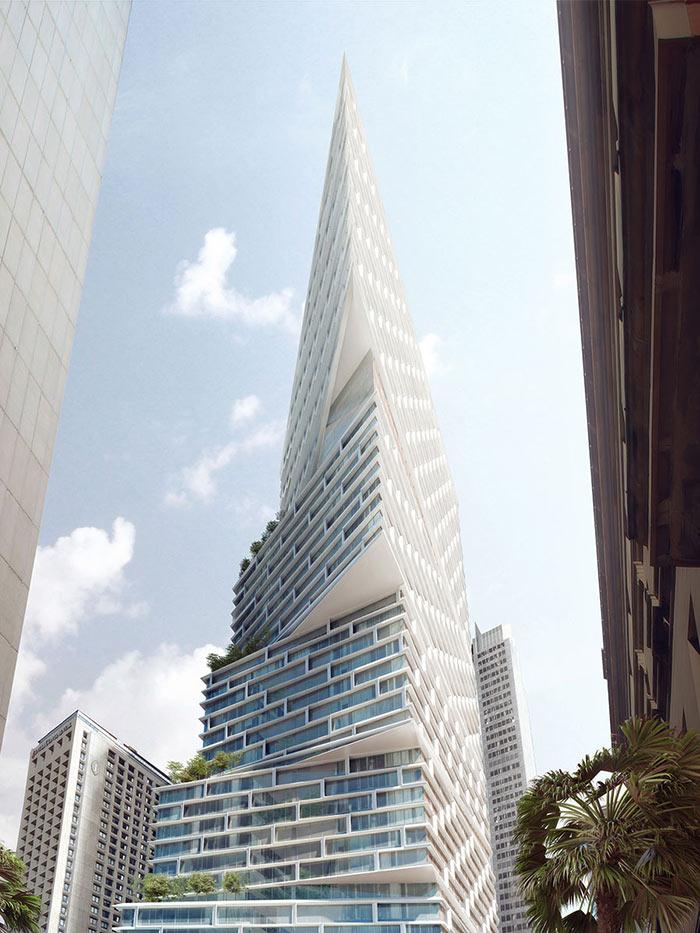
As part of the network Circle House Lab, you work on accelerating the transition to a circular economy in the real estate industry. How are you pursuing this?
Poulsgaard: The Circle House Lab sought to facilitate an industry-wide push for circular construction in Denmark. The Lab came out of Circle House, a social housing project and circular lighthouse demonstrator. It is designed for disassembly inside out, so all its components can be disassembled without significant loss of value. To develop this system in a scalable way, GXN and 3XN worked with more than 60 different partners across the building value chain. We understand that everybody has a piece of the puzzle. If we are to put these pieces together in a new way, everybody needs to have a seat at the table and share their perspective.
The Circle House Lab is also working closely with the Danish Standards Association to support the development of new European standards for circular construction.
Scandinavia has been an early adopter of mass timber construction. Why is that?
Nielsen: It’s not only Scandinavia, it’s also France and Switzerland. We are currently doing the Tilia Tower in Lausanne, which is also a high-rise. But I think in Scandinavia we have a very strong sustainable agenda. Denmark hardly has any resources. The only resource we have is trying to be ahead and sell green technologies. Denmark is a knowledge-selling country so we have to press ahead in that way.
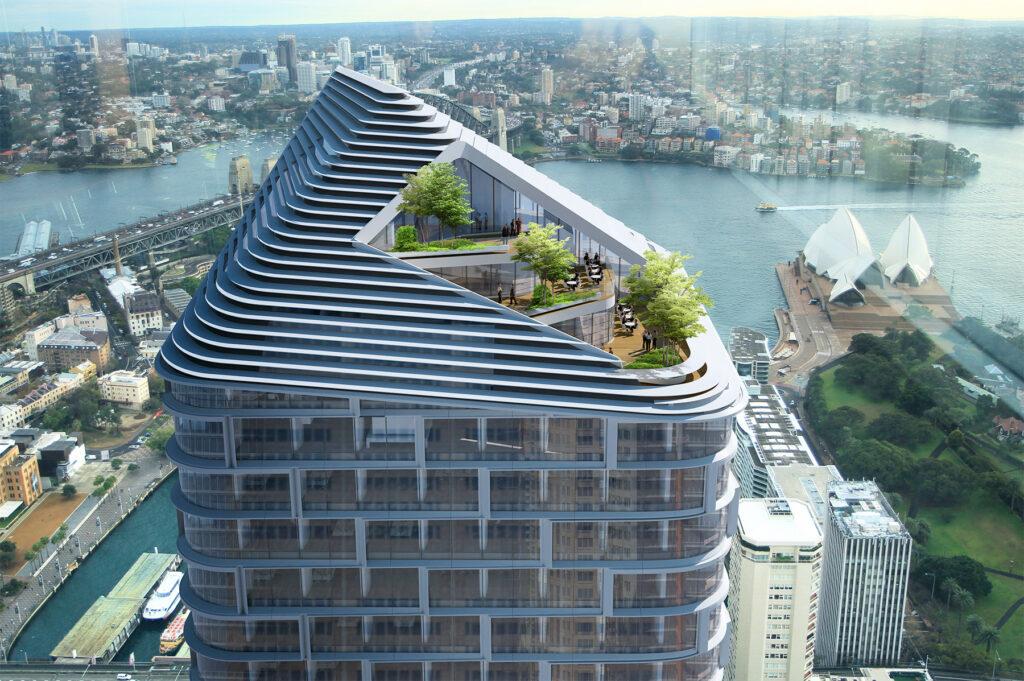
Why isn’t everybody building with mass timber?
Nielsen: Timber has its limitations of course, but you will see it more and more. We now have a fairly large production of timber buildings in many different countries. But you have to look at it holistically and use it where it makes sense. Where this isn’t the case, you have to use steel and concrete. You have to weigh everything up.
Poulsgaard: Things are moving very fast so we have established a timber group in the office consisting of design architects, construction architects and GXN circular design specialists. We are trying to capture all this and we want to make sure we have up-to-date information.
If you could choose a dream project, what would that be?
Nielsen: A dream project for me is a project that has a great influence and impact on people’s lives in a positive way. Having the right client and the right opportunity to do something that can be a game changer on so many levels. Luckily from time to time we receive projects like that. The upcycled high-rise was one of them and now it will stand as an icon in Sydney.
Interview: Gertraud Gerst
Images: Adam Mørk, Lasse Martinussen, 3XN/GXN

